Midland and New Mexico
I apologize in advance because this post is a bit on the long side with lots of photos but I hope you’ll hang in there to the end because I really enjoyed all the experiences illustrated here.
MIDLAND/ODESSA, TEXAS
On February 25, I left beautiful Big Bend National Park and headed north to Midland, Texas. Midland is the heart of the Texas oil industry and nearly every business there supports it. As I approached town on I-20, all I could see was miles of oil wells. That being said, it’s one of the ugliest places I’ve seen in my travels.
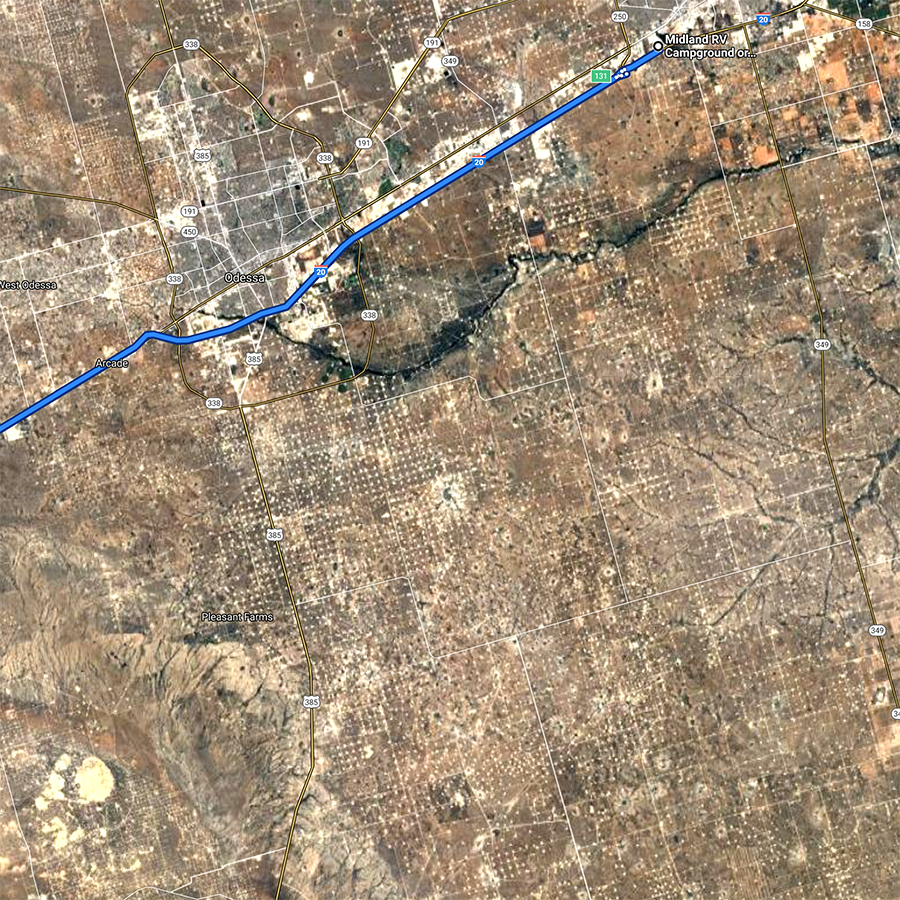
All the little white dots are oil wells.
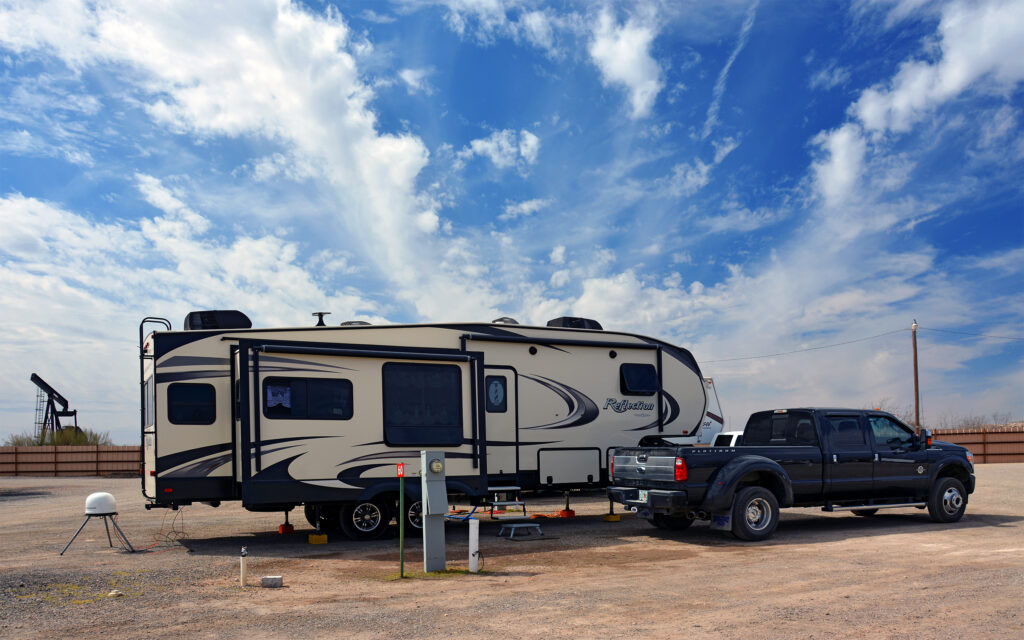
My site at Midland RV Park wasn’t much to look at but the sky was gorgeous.
I spent a week at Midland RV Park and was able to visit several interesting museums in the area. Just a couple miles up the road from the RV park is the Permian Basin Petroleum Museum, one of the largest museums in the country dedicated to the oil industry. It offers a comprehensive view of the history of the geology, oil discovery, current state of the industry and even predictions of future technology. The Permain Basin covers 86,000 square miles in southwest Texas and Southeast New Mexico and according to a report from April, 2019, is the largest producing oilfield in the world.
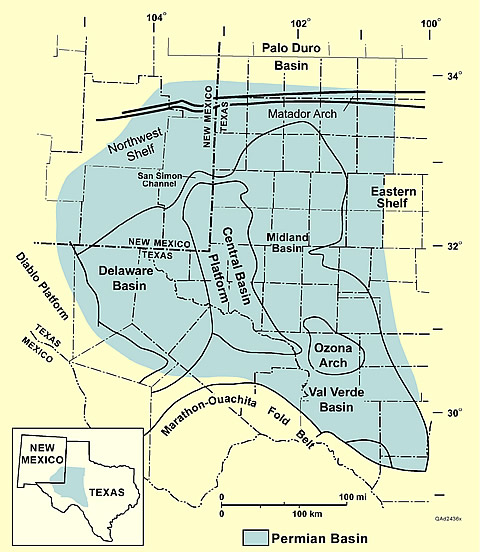
Map of the Permian Basin in Southwest Texas.
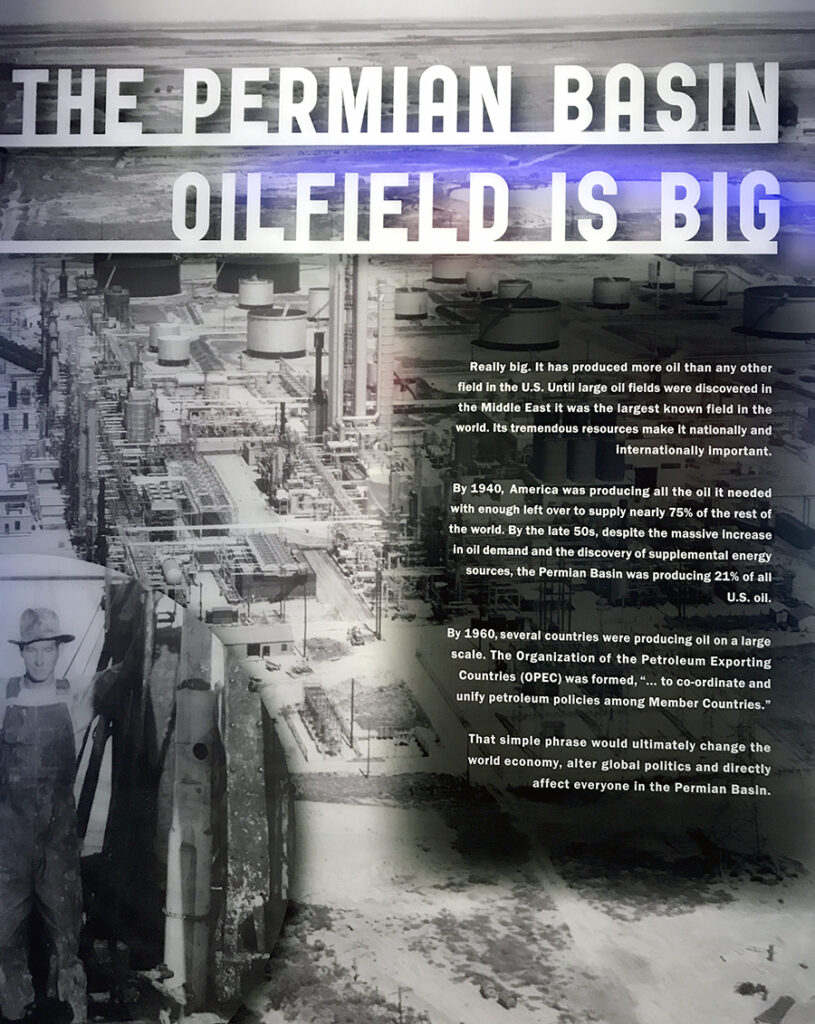

Two pumpjacks operating at the entrance to the Permian Basin Petroleum Museum in Midland, Texas.

This early oil drilling derrick is on display at the Permian Basin Petroleum Museum.

The museum features displays dedicated to the history of U.S. oil and gas production.

Outside are stone markers identifying significant events in the history of oil production. These two—more than any others—certainly changed the world as we know it.
Also, in Midland is the childhood home of President George W. Bush. After World War II, his father, President George H. W. Bush co-founded an oil company drilling in the Permian Basin and he and wife Barbara spent much of the 1950s raising their children in this 1,400 square foot, three bedroom house in family-friendly Midland. Barbara Bush was instrumental in helping the nonprofit organization restore the house to how it looked when they lived there by providing photographs and some personal items. Most items in the house are authentic from the era but not necessarily owned by the Bushes. Being a Baby Boomer, myself, I found this tour to be a very nostalgic trip back to my own childhood.
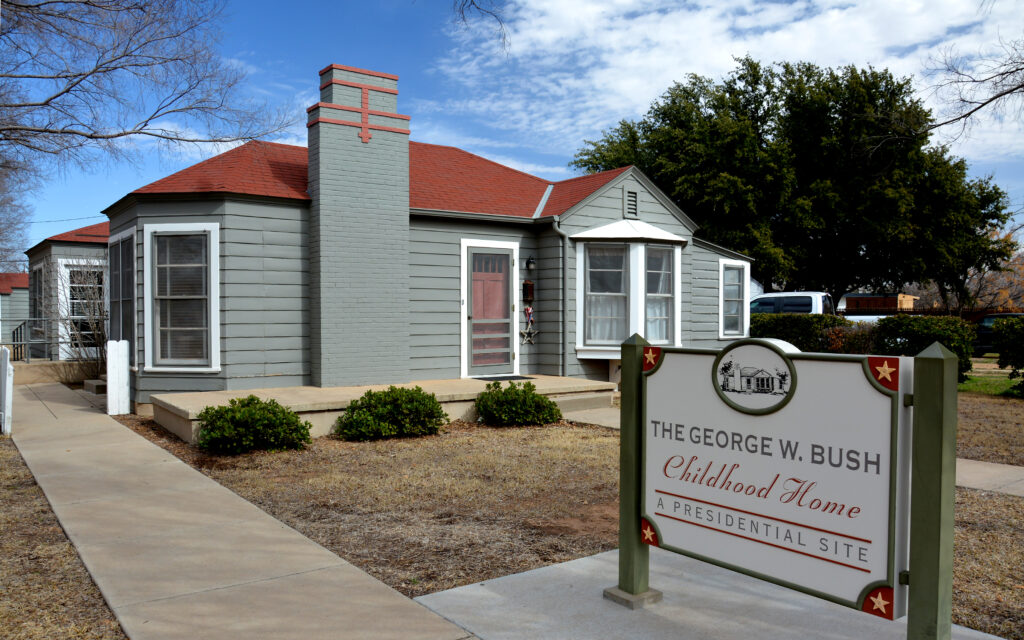
Remarkably, this modest home on Ohio Street in Midland, Texas produced two state governors and two U.S. presidents.

The living room of the Bush home in Midland, Texas.
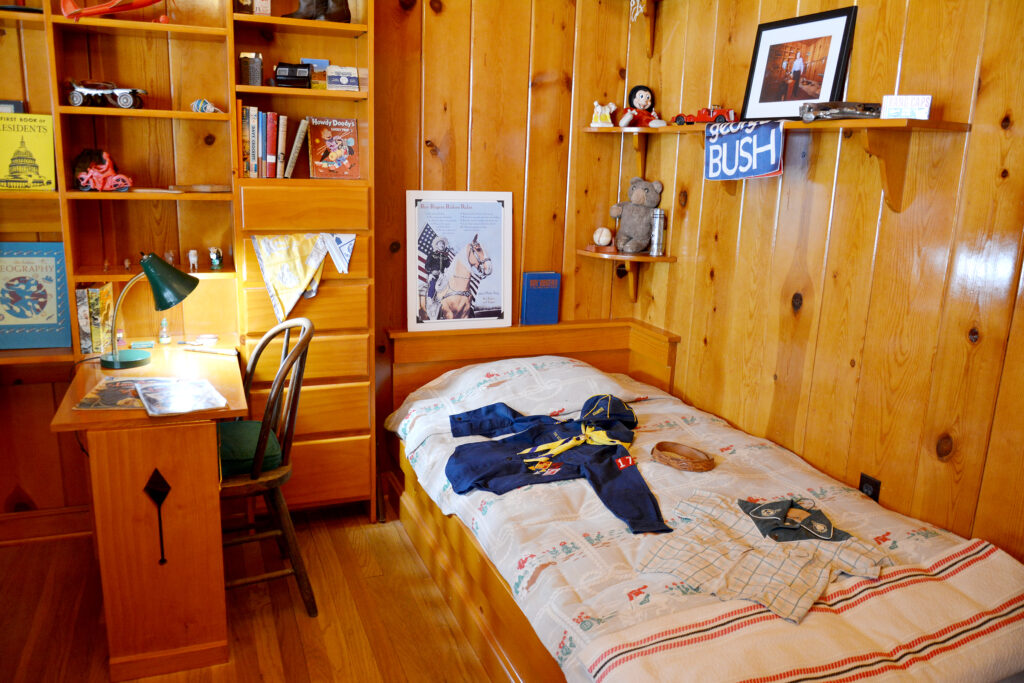
Being the oldest, George W. had a room of his own.
In nearby Odessa, Texas, I visited the Presidential Archives museum dedicated to all the U.S. presidents. A number of Texas citizens had individual private collections of presidential memorabilia that they put together to create this wonderful little free museum.

In the lobby of the Presidential Archives is a replica of the oval office rug from the Truman administration.

On display are memorabilia items and historical details from each presidency.
Another free Odessa museum is the White-Pool House. Built in 1887, its the oldest house in the town.
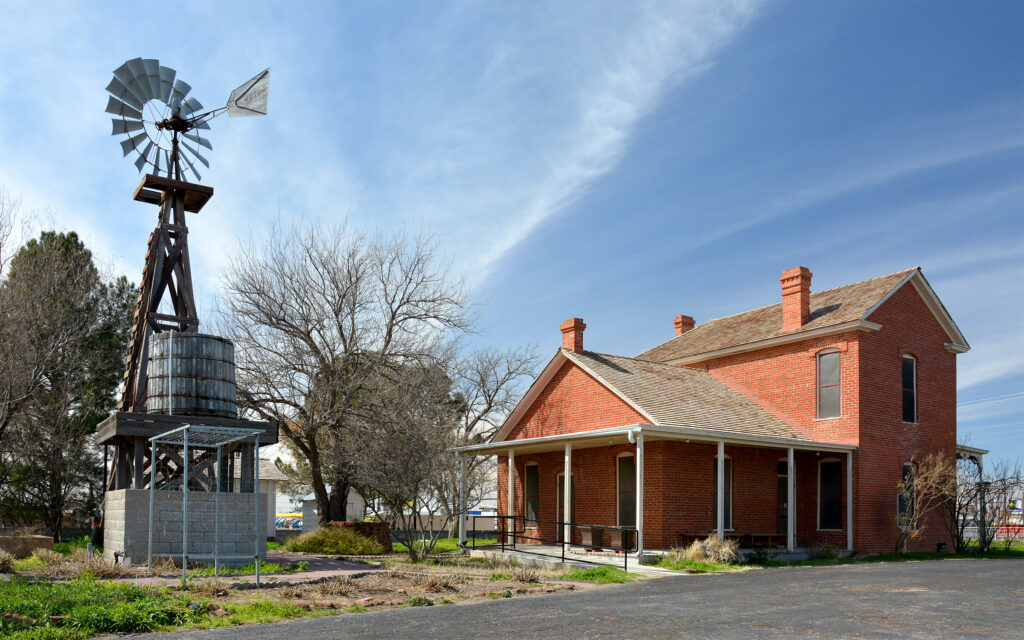
The 1887 White-Pool House is the oldest house in Odessa, Texas.
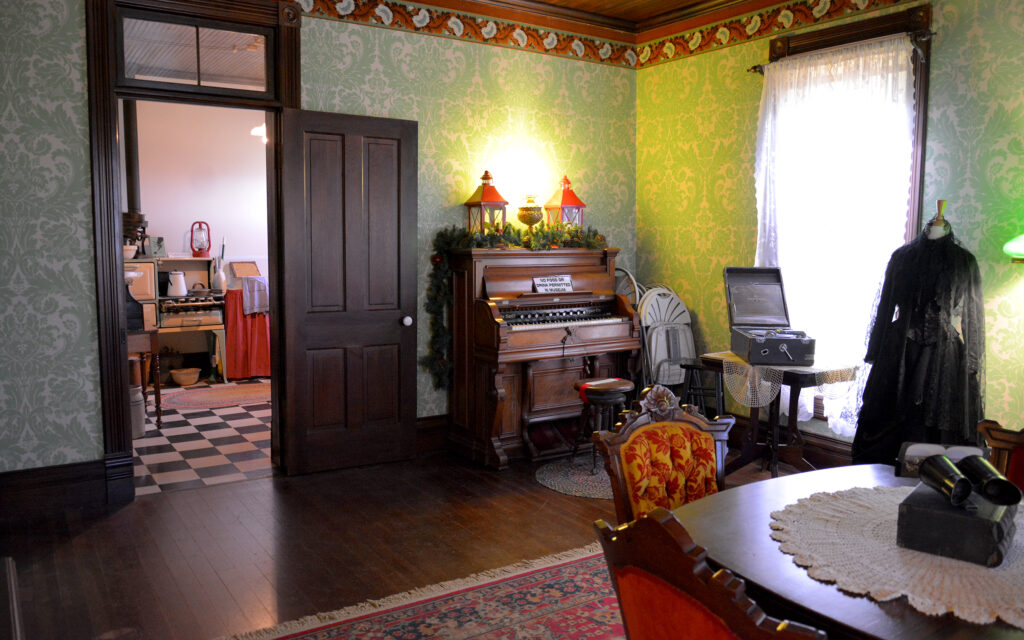
The dining room of the White-Pool House.
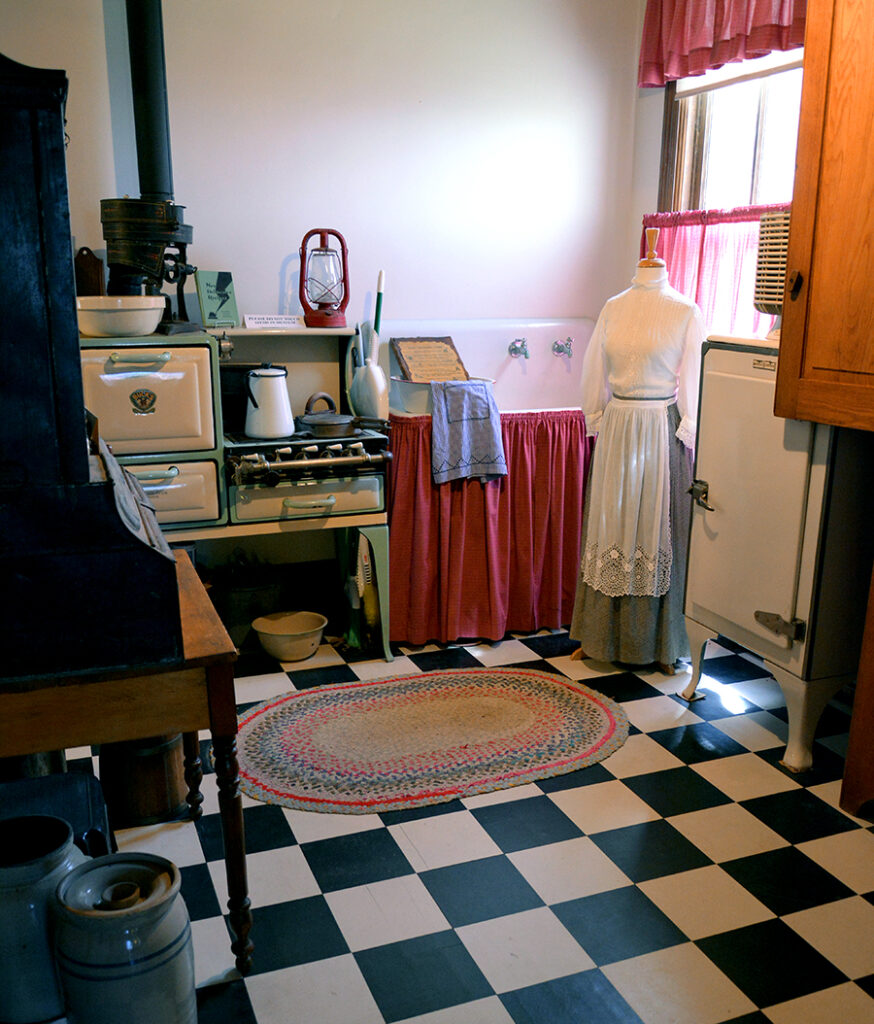
The kitchen of the White-Pool House.
ALAMOGORDO, NEW MEXICO
Alamogordo is home to White Sands National Park, White Sands Missile Range (formerly White Sands Proving Ground). The missile range (gray area on the map at the bottom of this blog post) surrounds the national park and extends north to the Trinity test site where the first nuclear bomb was tested in 1945. On days when the military is running missile tests, they close State Highway 70 to traffic as well as the national park. Fortunately, this didn’t happen during my stay although I would have liked to see it.
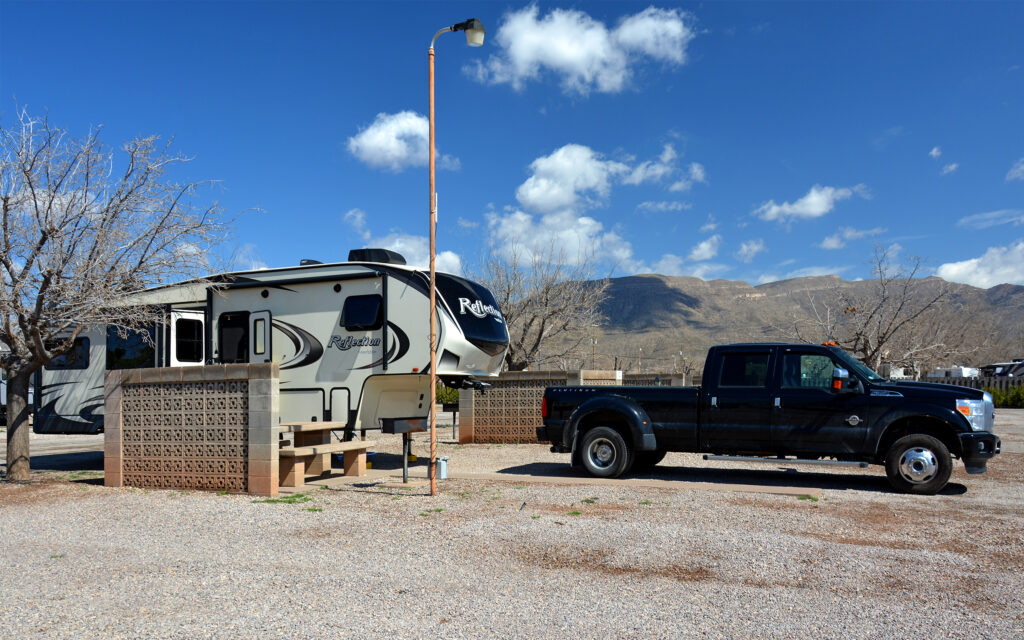
My site at Alamogordo/White Sands KOA had a nice mountain view.
White Sands National Park is an amazing place. As you drive down State Highway 70, the landscape is typical desert then suddenly, out of nowhere, there’s a pile of white sand. That pile of sand is actually 143,000 acres of pristine gypsum sand dunes. There is a lake on the west side of the park and rain and snow-melt fill the lake with gypsum deposits. Over time, the water evaporates and the wind turns the gypsum to sand and dust, blowing it to the east where it accumulates on the desert floor. This is highly localized and the sand stays pretty much within the confines of the park.
The water table here is only a few feet below the surface of the dunes. This means the sand is always damp and hard-packed so it’s easy to climb the dunes and footprints are preserved unless a strong wind erases them. A popular activity here is sledding on the dunes using plastic snow saucers.
Entry to the park is $25 per car but with my Lifetime Senior National Park Pass, I paid nothing. I visited the park three times during my week here.
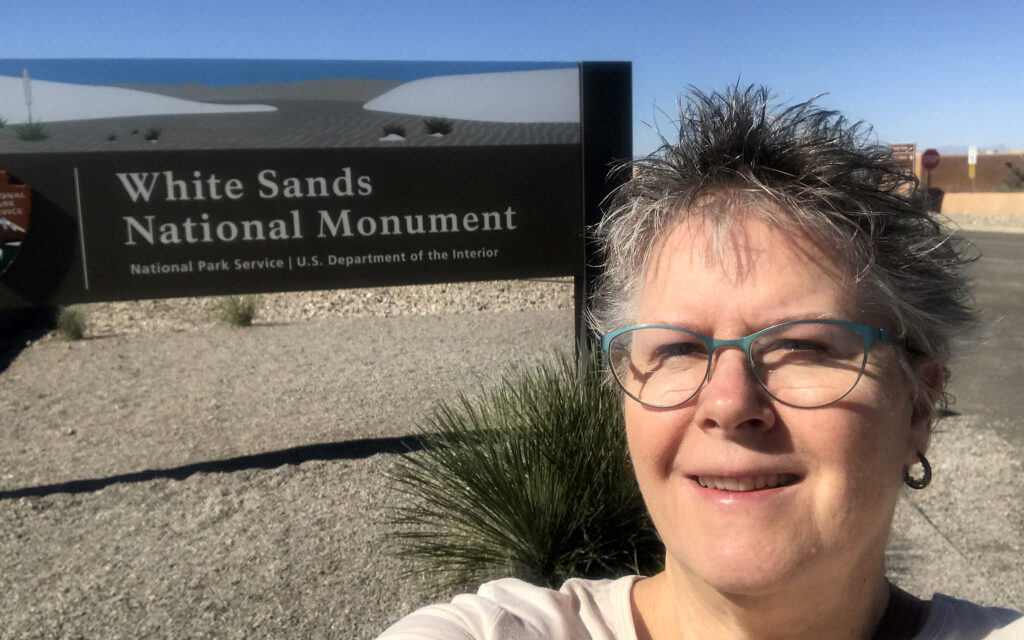
White Sands is the newest National Park, having received full status in August, 2019. They haven’t replaced their sign yet.

The dunes meet the desert.
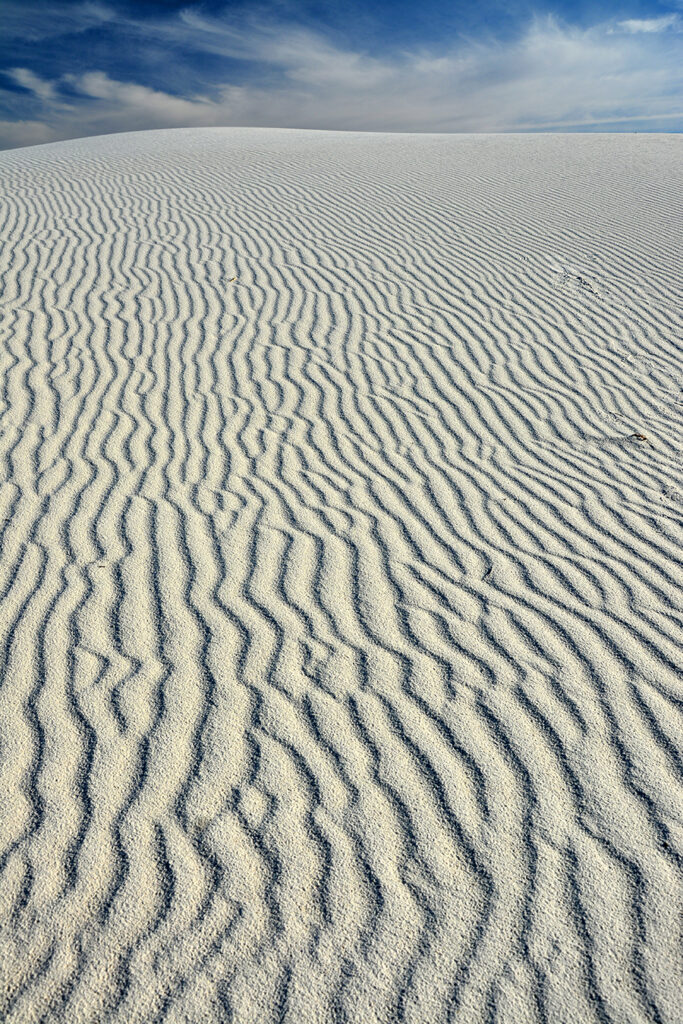
Wind creates wonderful patterns on the dunes.

The harsh desert sun beats down on the dune. Although the thermometer read upper 50s, it felt like more like 80 and I wore a T-Shirt.
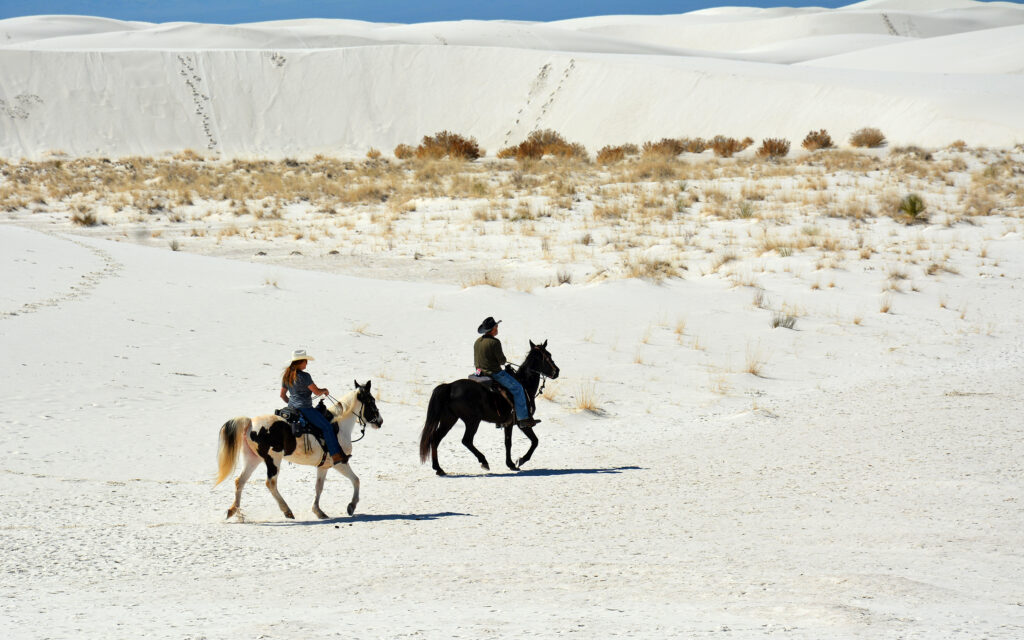
Horseback riding is popular on the dunes.

Dusk on the dunes with the San Andres Mountains in the background.

With a shallow water table, the sand is always damp, even at the top of a dune.

The sand is cool and damp to the touch.
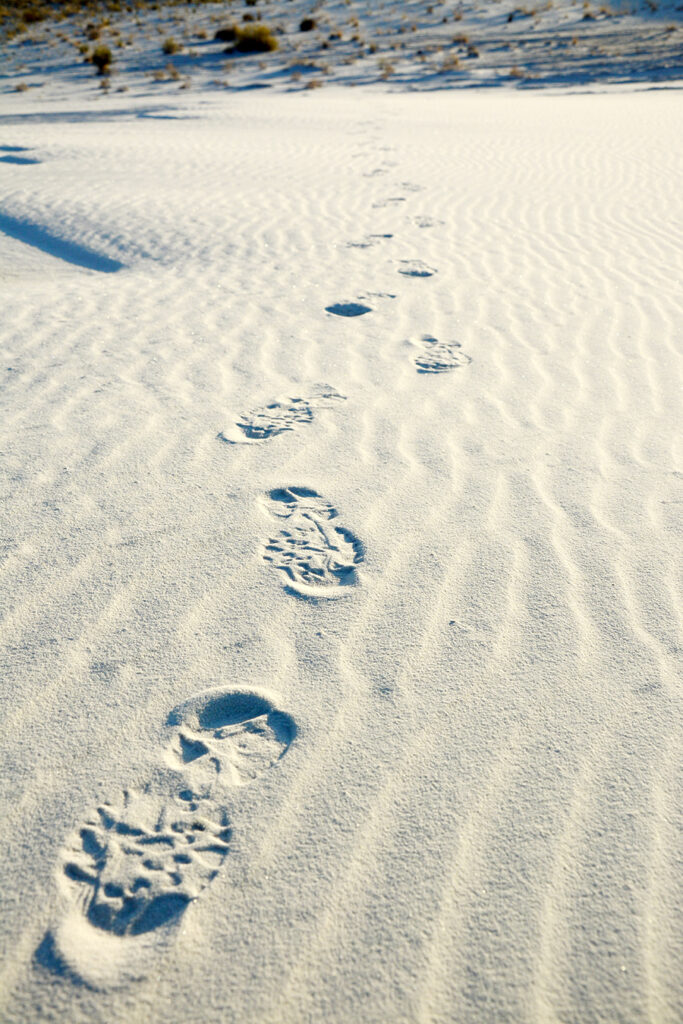
The damp, packed sand creates perfect footprints, making it easy to find my way back to the truck.
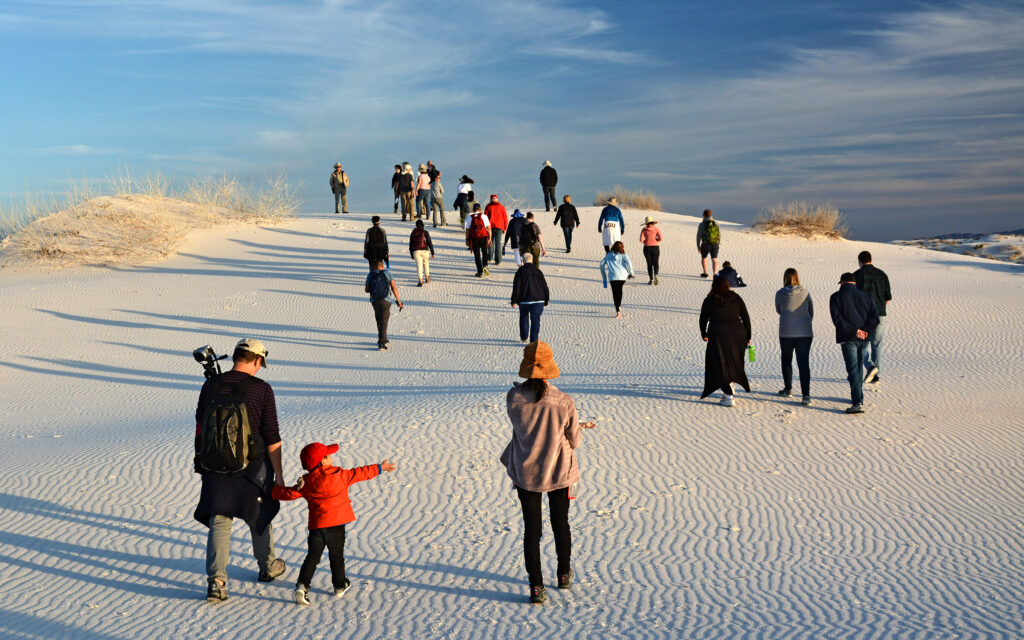
The park offers free guided sunset tours.
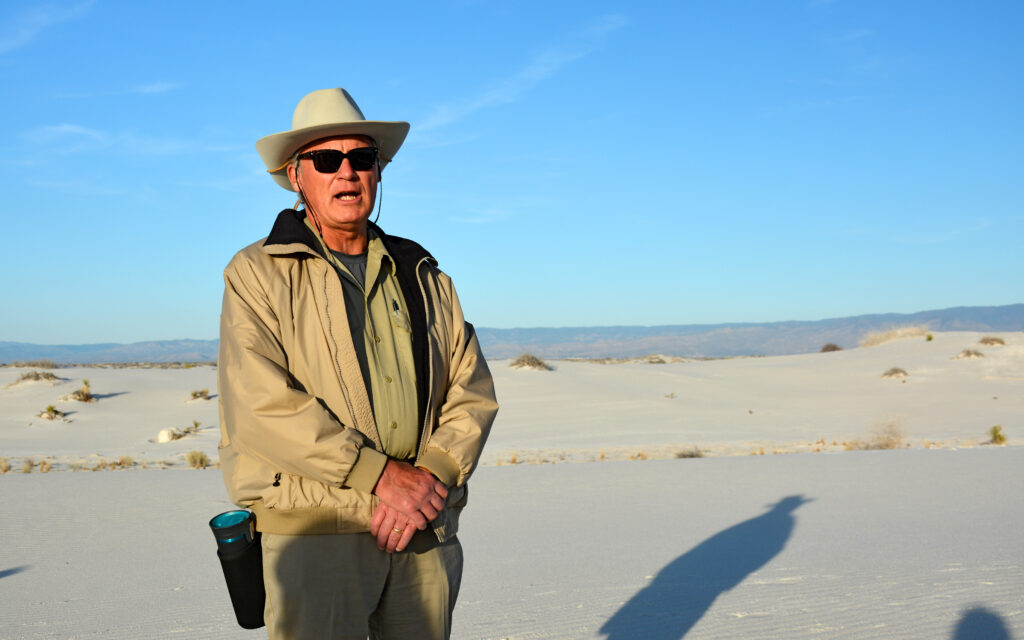
Our volunteer tour guide.
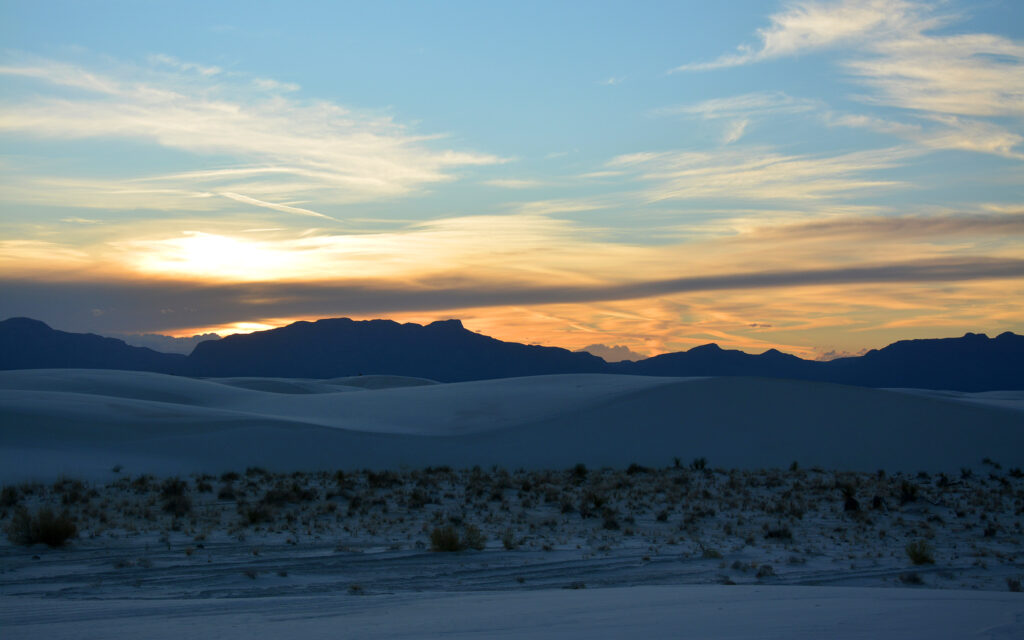
Sunset at White Sands National Park.
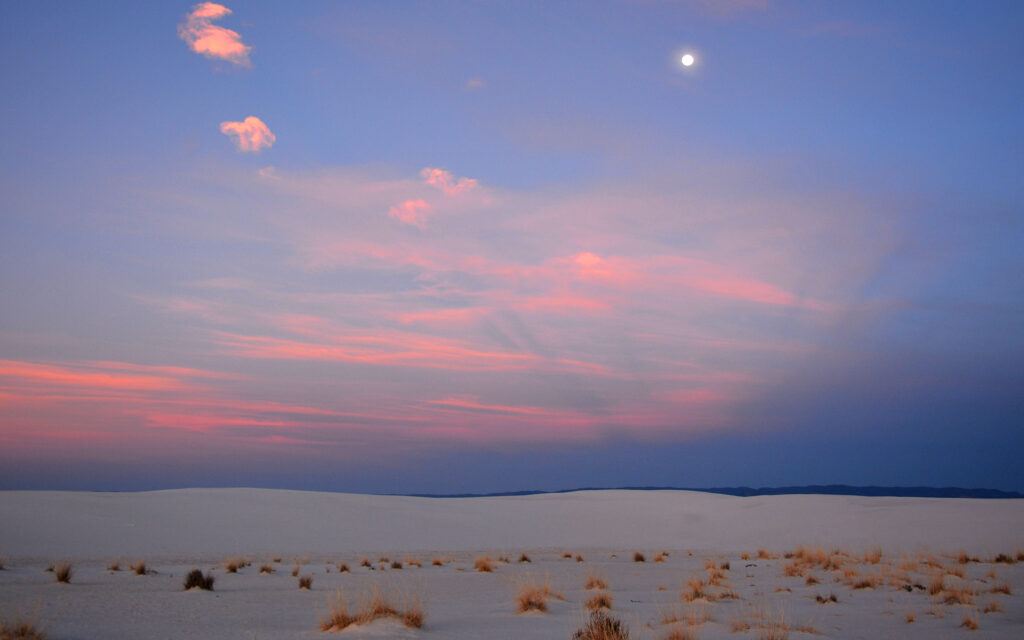
Looking east, I caught the reflected color on the clouds with the full moon standing watch.

One of my famous “Ford ad” photos.
Another thing Alamogordo is famous for its pistachios and there are two major growers in town that I visited. They also both make wine so it was a win-win for me! The pistachio tree is native to the Middle East and Central Asia and most of the global production comes from Iran with California coming in second.
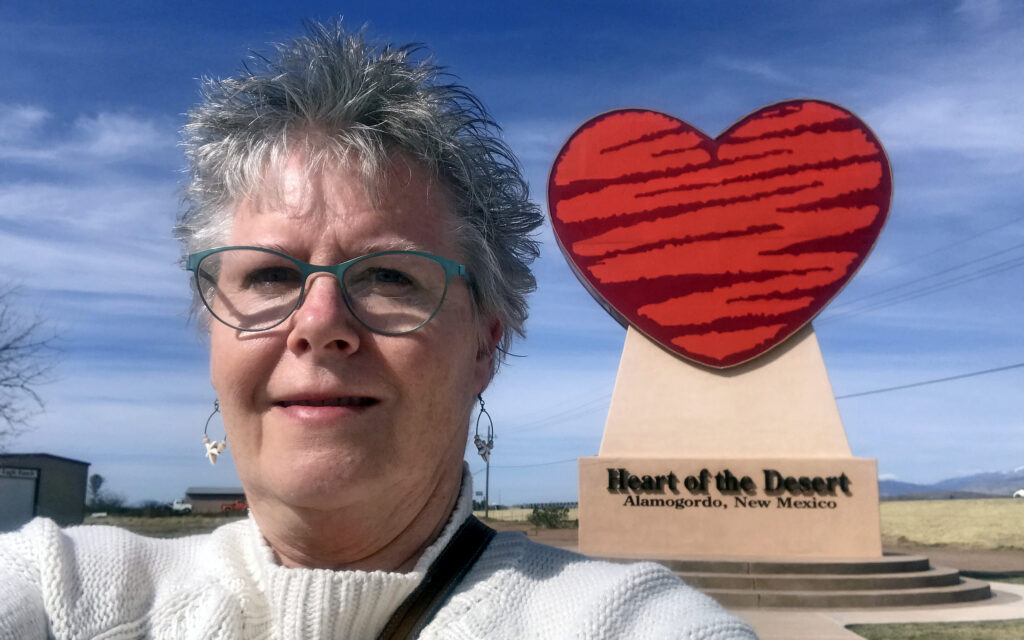
First stop was Heart of the Desert for a factory tour and wine tasting.

It’s not a great look but everyone had to wear hairnets while inside the processing plant.

Click on image to view a very quick video of the sorting process. Seeing this, I couldn’t help but think of Lucille Ball’s famous chocolate factory skit.
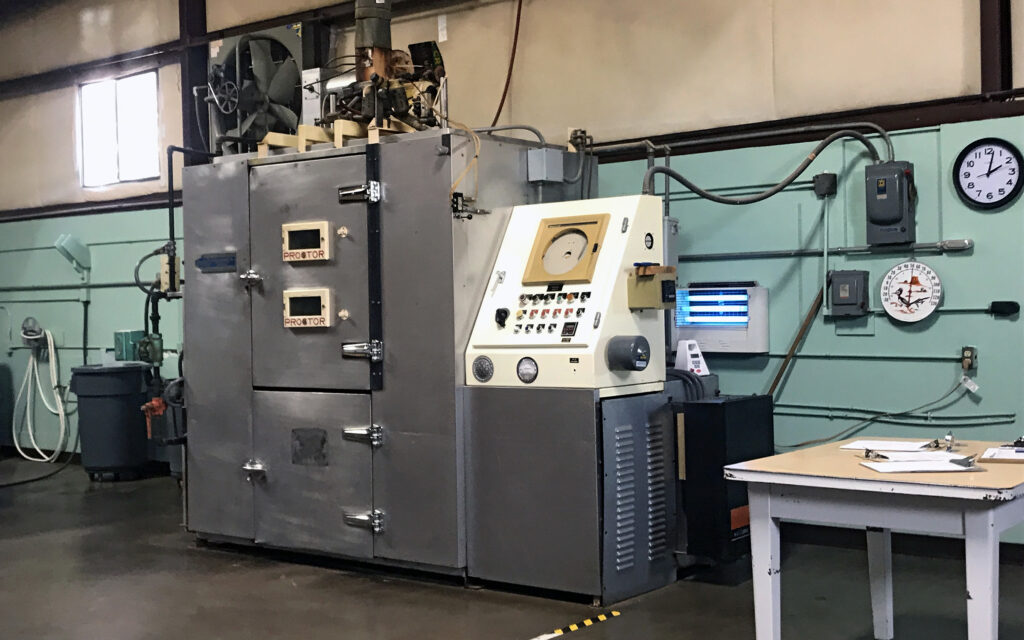
This is a small production facility but I was still surprised at how small the roasting oven is.
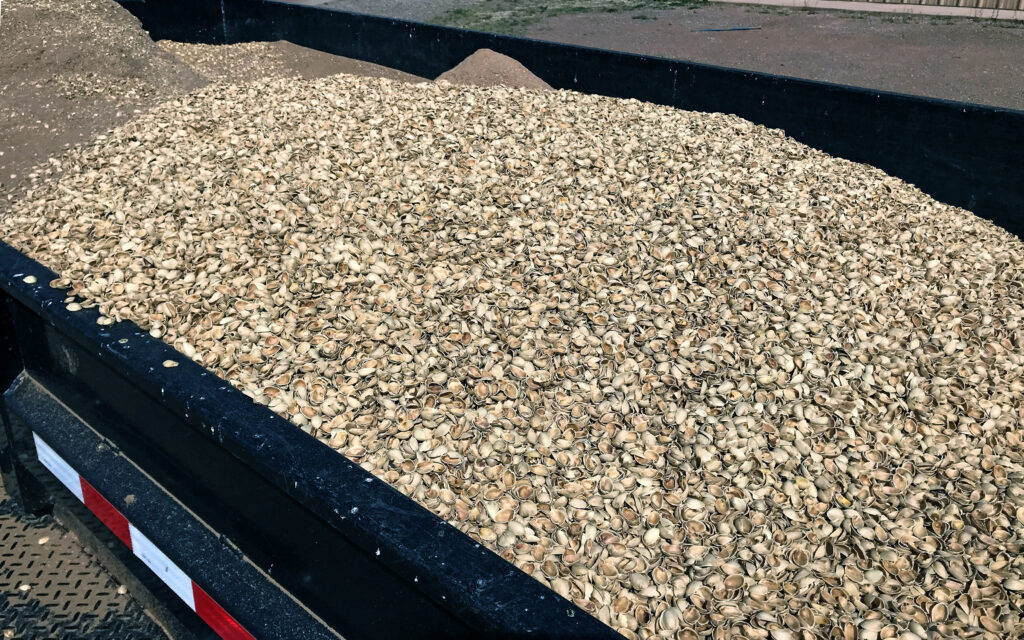
The discarded shells are used as mulch for the trees. Nothing goes to waste.
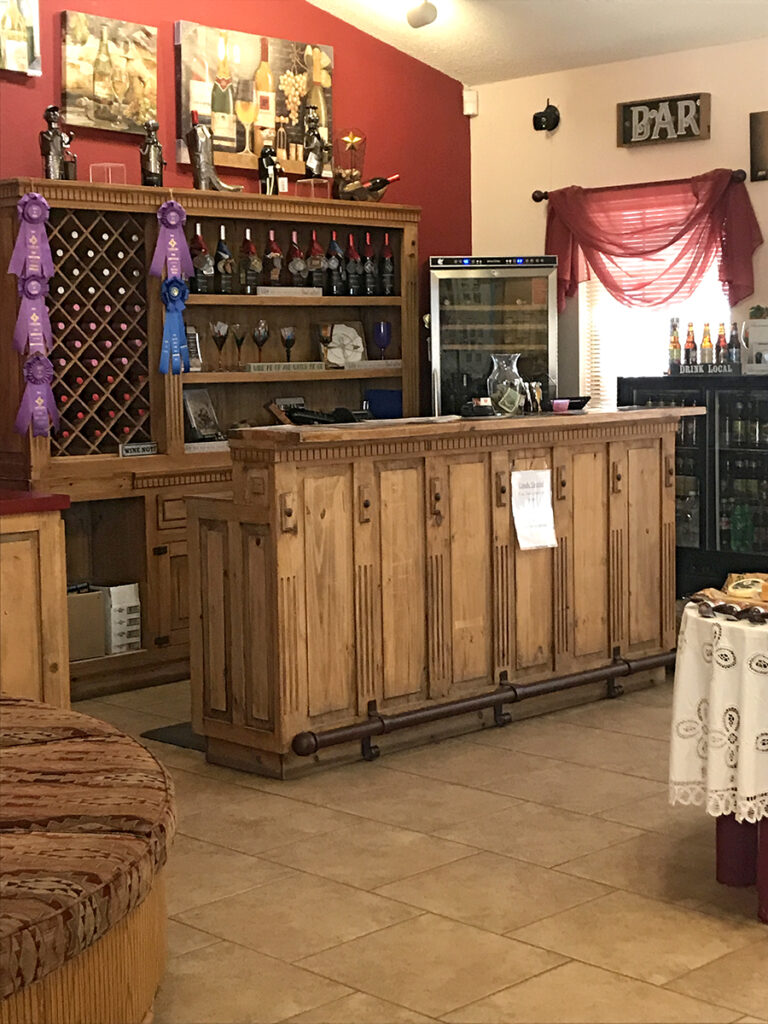
The wine tasting room.
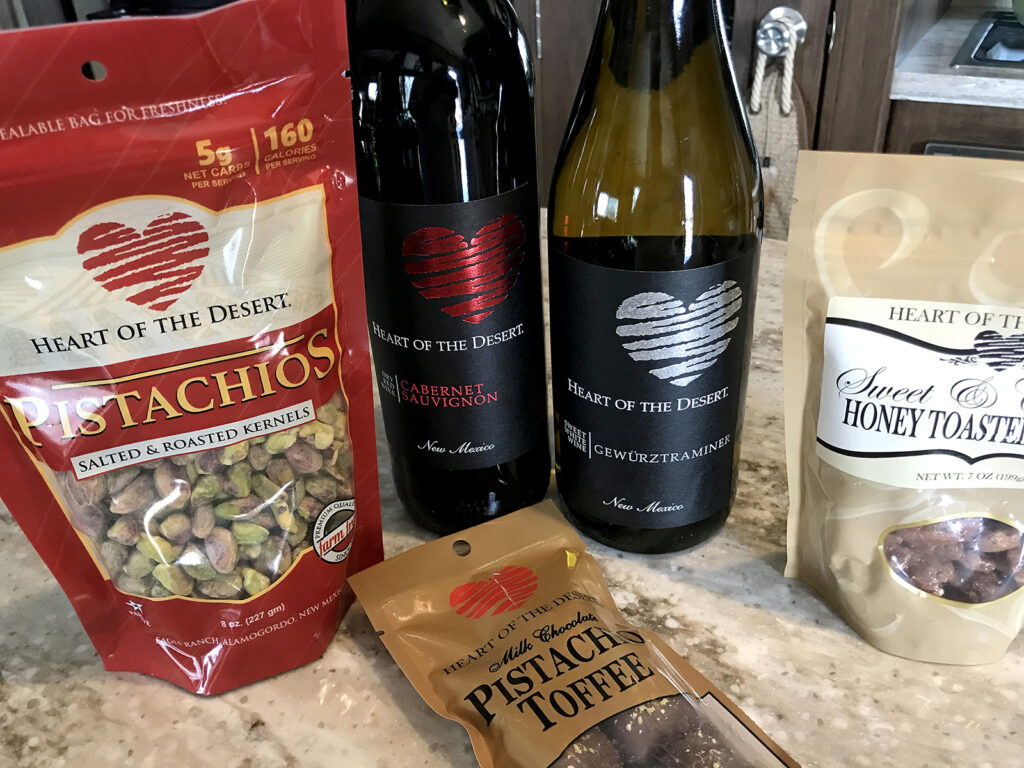
My delicious purchases at Heart of the Desert.

Next, I visited McGinn’s PistachioLand, Home of the World’s Largest Pistachio. This tour only included the grove.
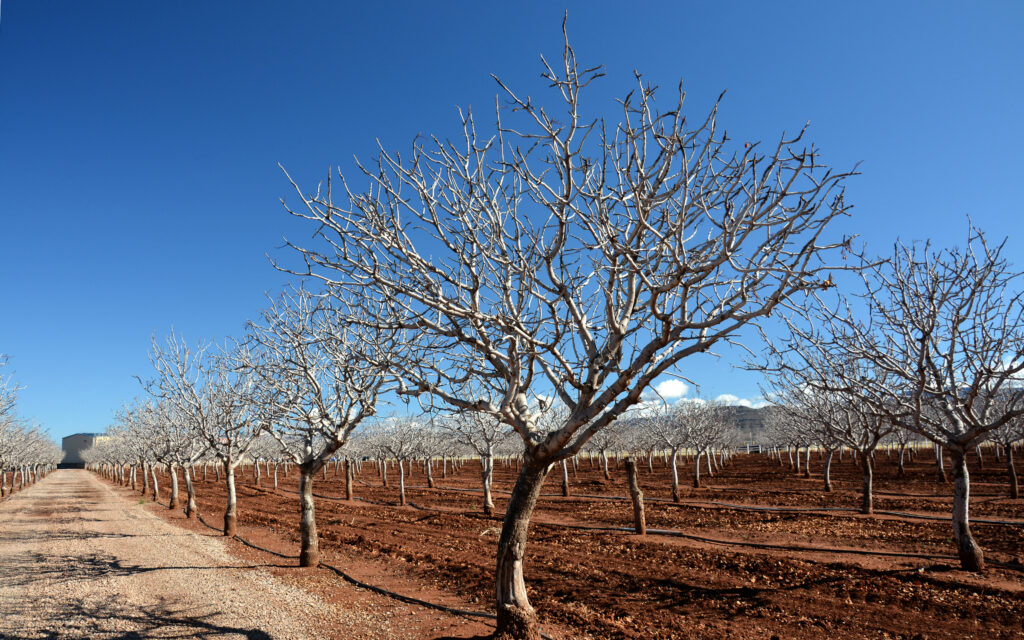
The pistachio grove.

Pistachios grow with a protective soft outer skin. When the nut ripens, it begins its characteristic shell splitting (this occurs naturally and is not a result of the roasting process), which causes the outer skin to peel off.
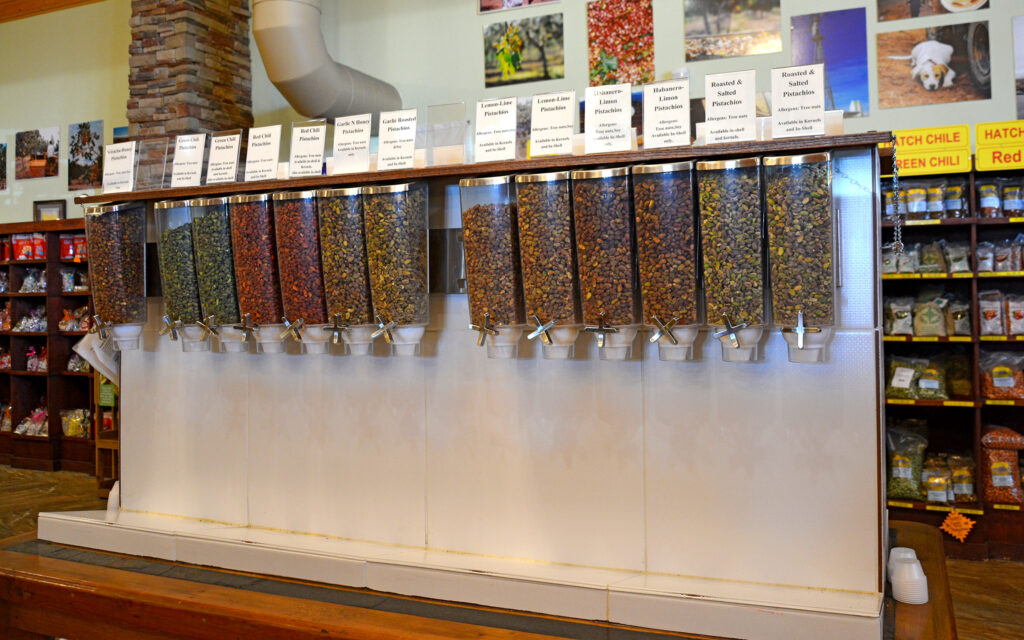
The sample bar at PistcahioLand. Where do I start?

My cache from PistachioLand. The Margarita-Lime Pistachios are amazing and the wine is even flavored with pistachio.
On a hill overlooking Alamogordo is the New Mexico Museum of Space History and Planetarium. The museum senior fee is $7 and the planetarium is $4. In addition to military artillery testing, much of the development of NASA rockets took place in New Mexico and this museum is dedicated to the early history of the space program.
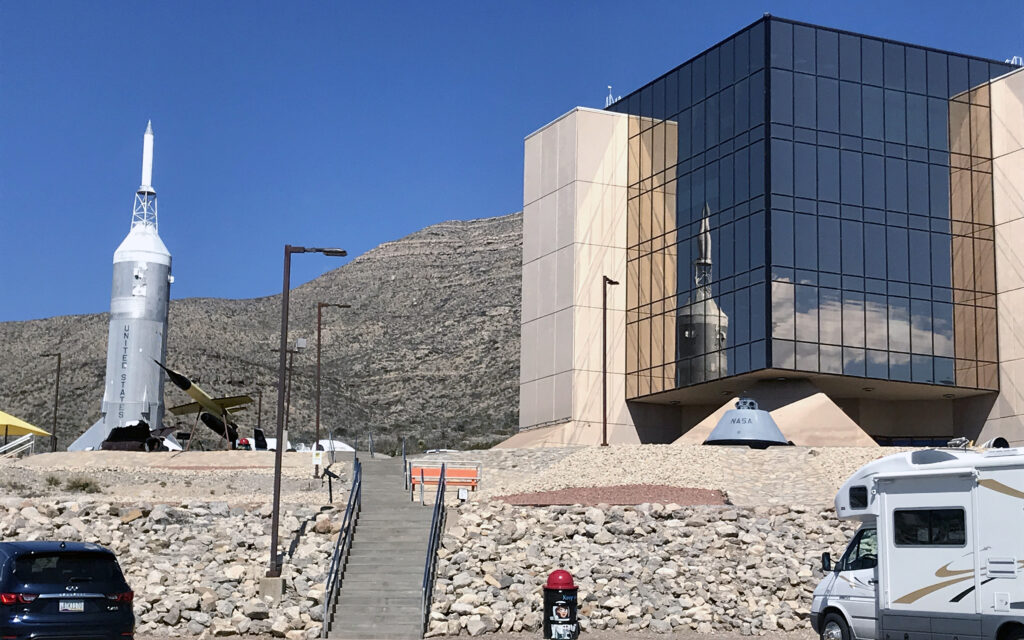
The New Mexico Museum of Space History in Alamogordo, New Mexico.
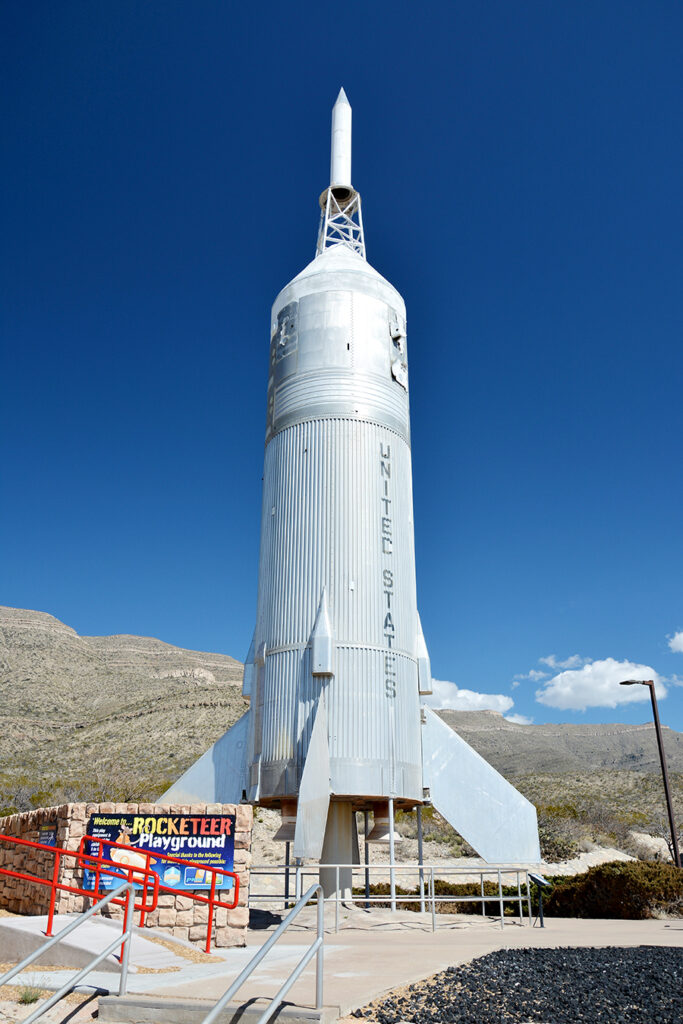
In the early 1960s, five of these rockets were launched from the White Sands Missile Range to test the Apollo Launch Escape System.
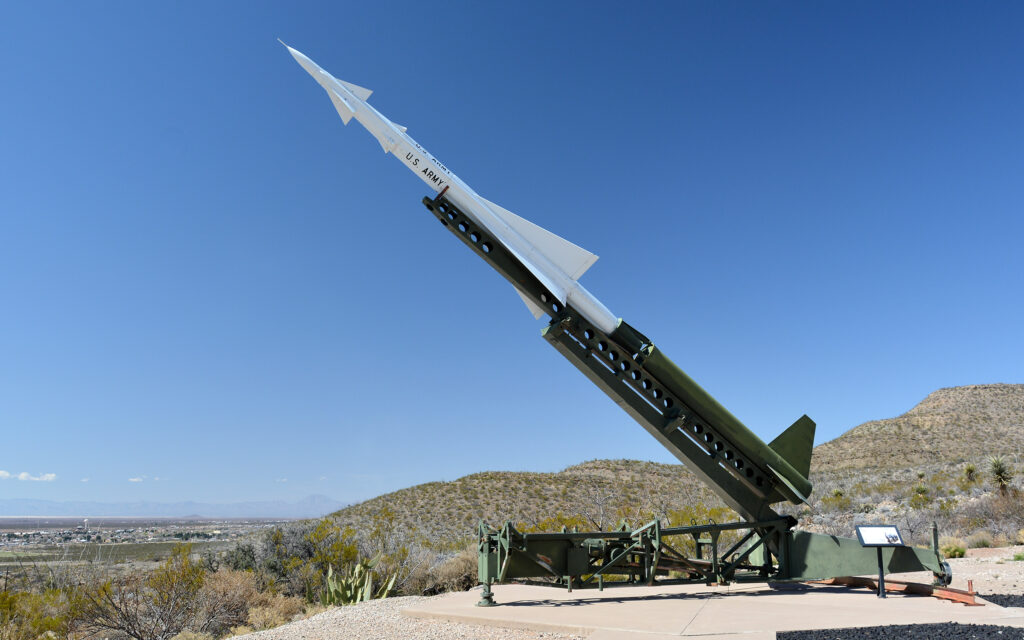
Developed on the 1950s, the Nike Ajax was the world’s first surface-to-air missile and was tested at White Sands Proving Grounds (now White Sands Missile Range).
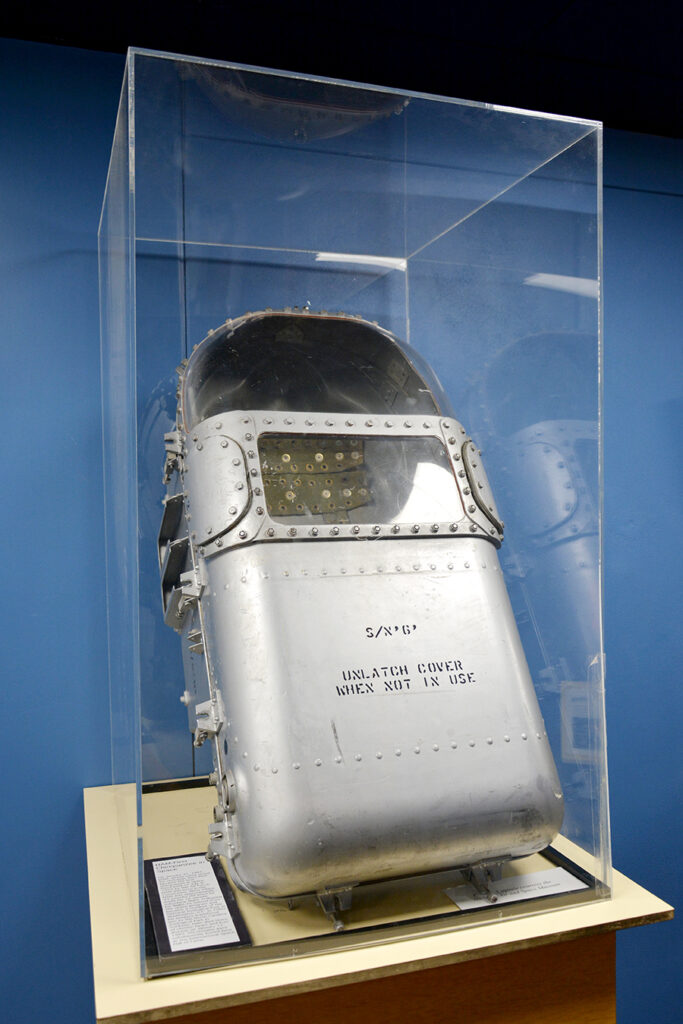
In 1961, as part of the Mercury program, NASA sent a chimpanzee named HAM into space. He rode in this pressurized capsule inside the larger Mercury capsule. HAM is buried on the grounds of the museum.
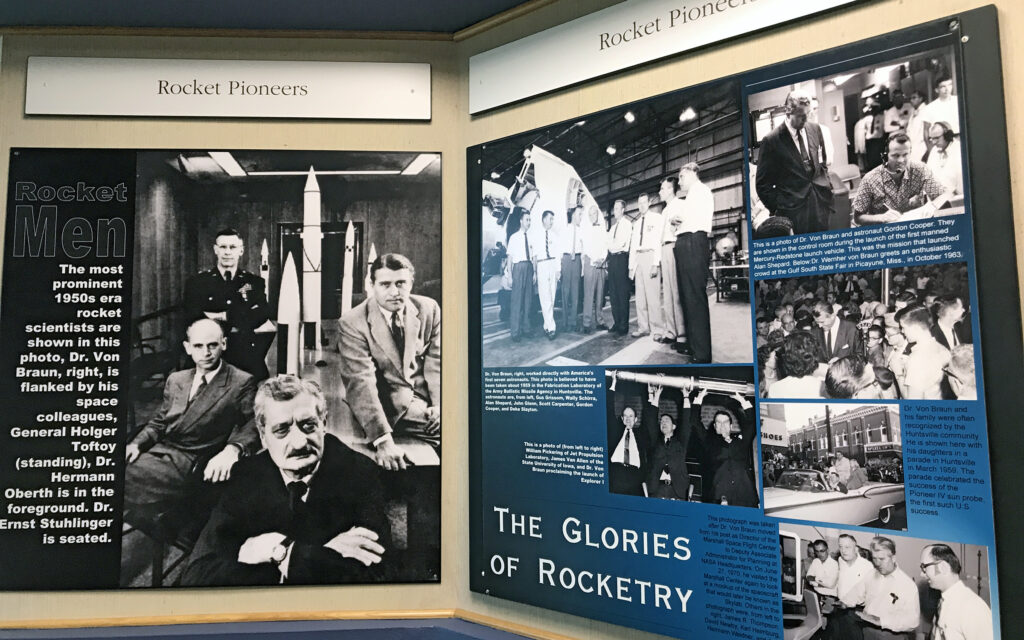
The museum has numerous displays highlighting the rich history of our space and rocketry programs.



The command center of a space shuttle.
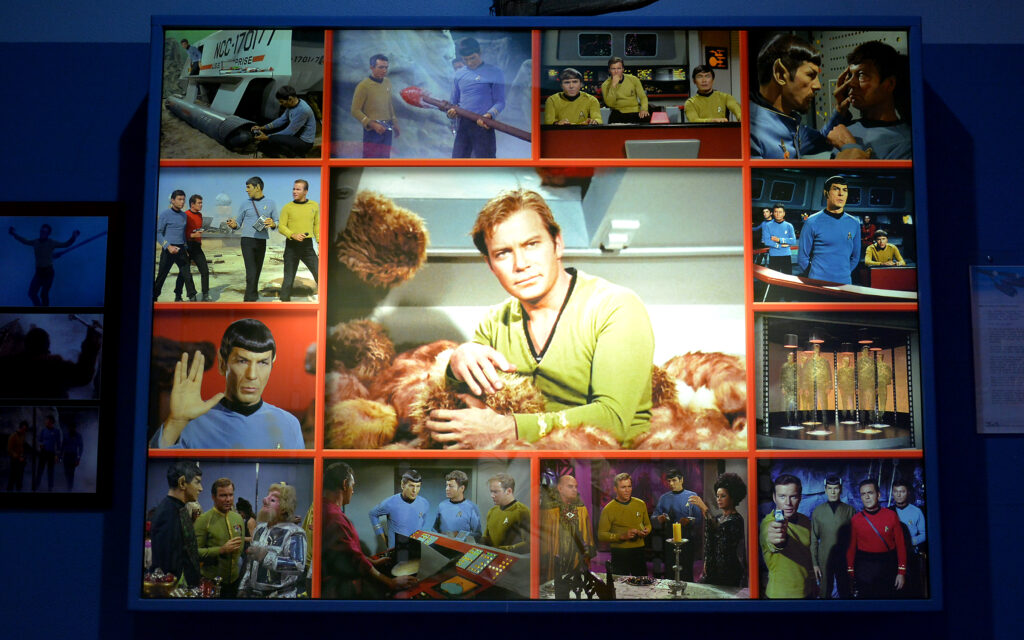
There’s even an exhibit honoring Gene Roddenberry and the StarTrek series he created.

Looking west from the museum, you can see the town of Alamogordo as well as the distinct line of the White Sands National Park and the San Andres Mountain Range in the distance.
Before leaving, I took a drive south to Las Cruces for the annual “Cowboy Days” event at the New Mexico Farm & Ranch Heritage Museum. The museum houses exhibits on all eras of New Mexico history but for “Cowboy Days” the 47-acre property comes to life with horse and cattle demonstrations, chuck wagons, food and merchandise vendors and live music.
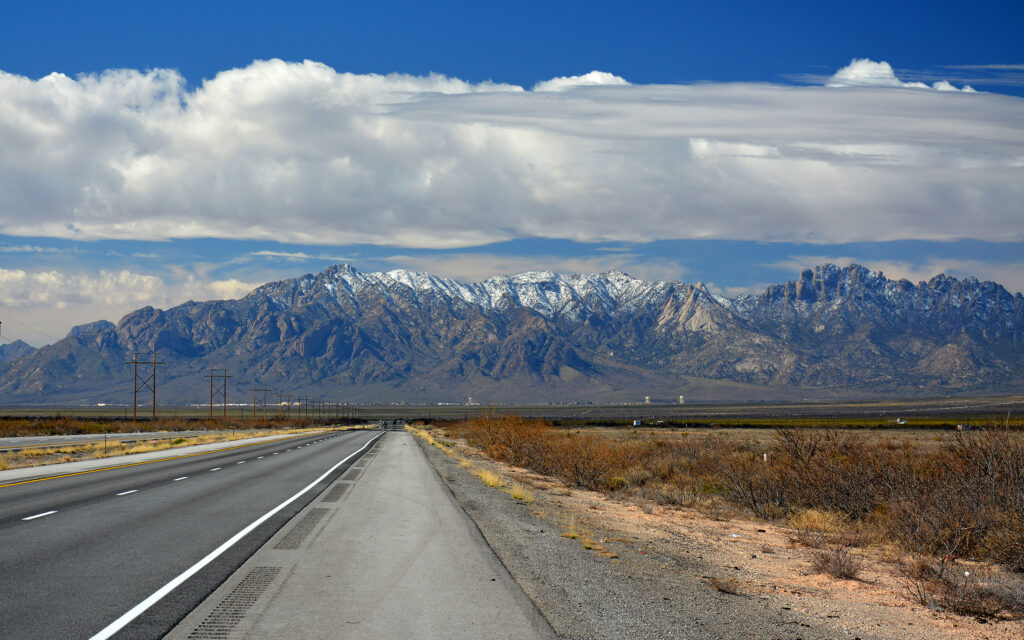
The view of the Organ Mountains from my drive down State Highway 70.
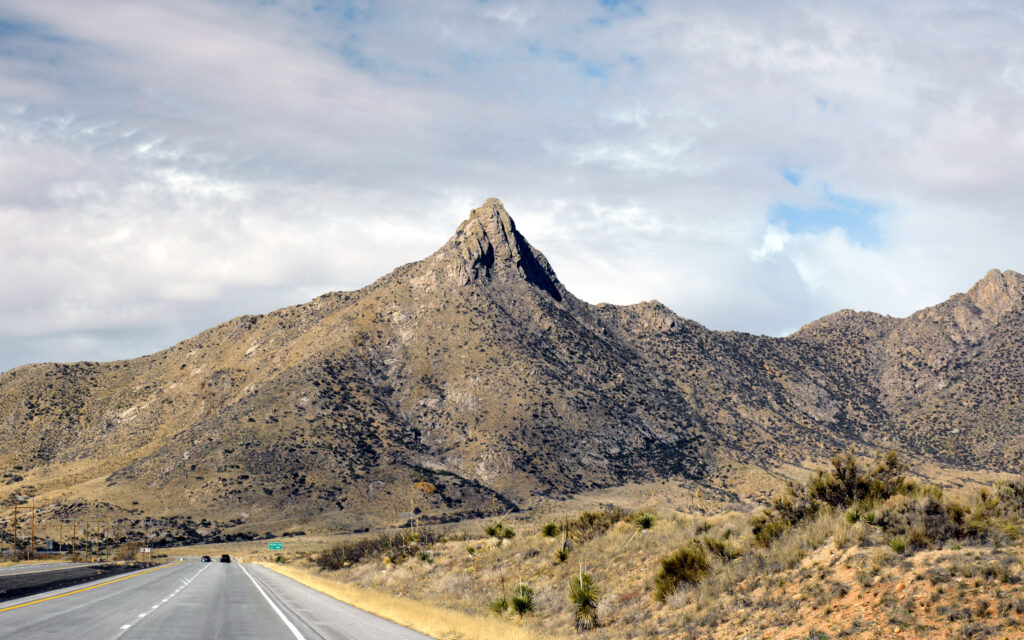
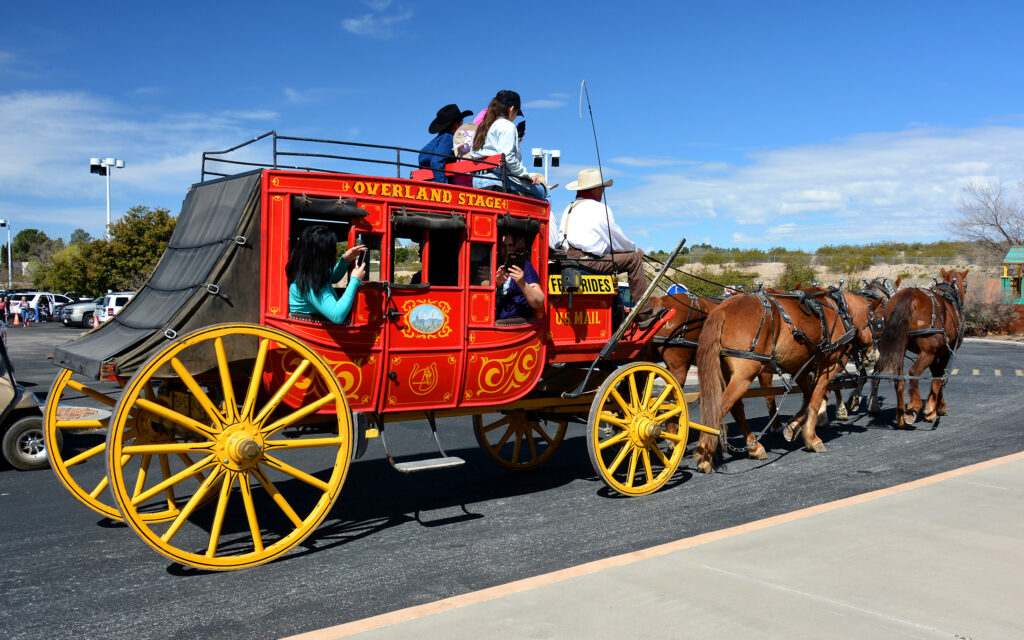
Stage coach rides at “Cowboy Days.”
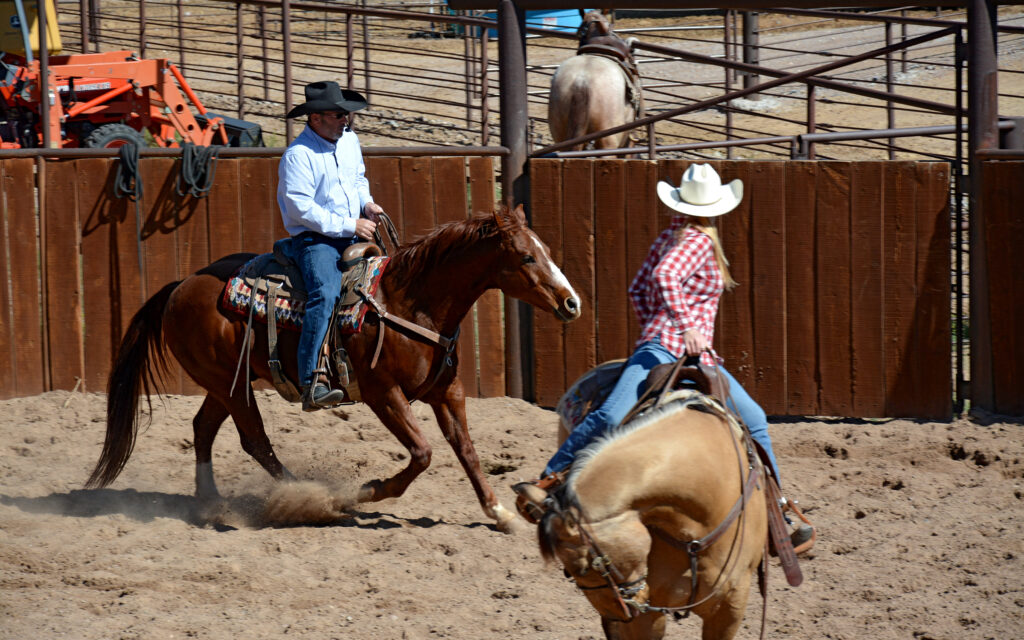
A demonstration of horse training techniques.

Introduction to different species of beef cattle explained their different qualities.
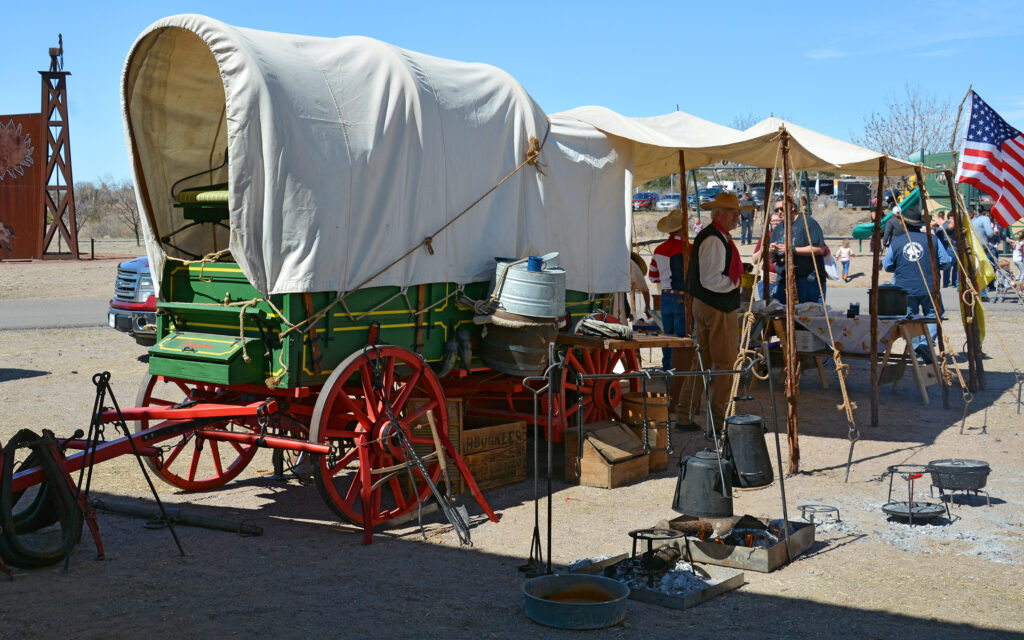
The iron skillet biscuits from this chuck wagon were delicious!

A vendor was selling frozen pickle shots and for some reason I was compelled to try it.

It was just as sour as you can image it to be.
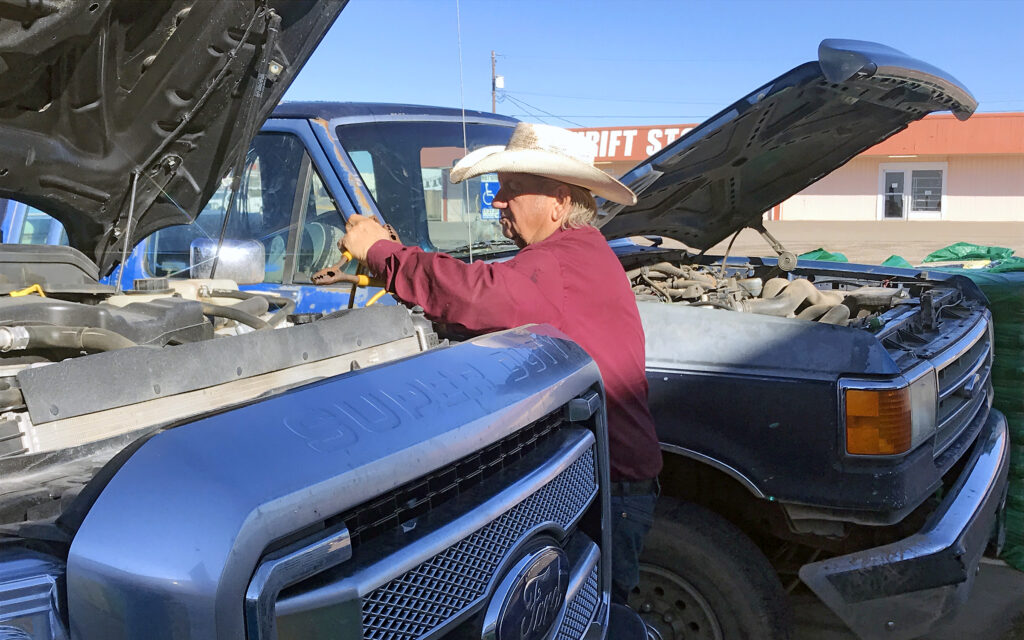
I was coming out of Tractor Supply Company one day and saw this man struggling to get his truck started so I offered to give him a jump.
LOURDSBURG, NEW MEXICO
This was not a deliberate sight-seeing destination—just half way to my next stop in Arizona—but I was pleasantly surprised to find a ghost town here. The Coronavirus shutdown began while I was here but I was able to get in what would be my last restaurant dining for several months. I knew the staff would be going through hard times so I left a 200% tip.
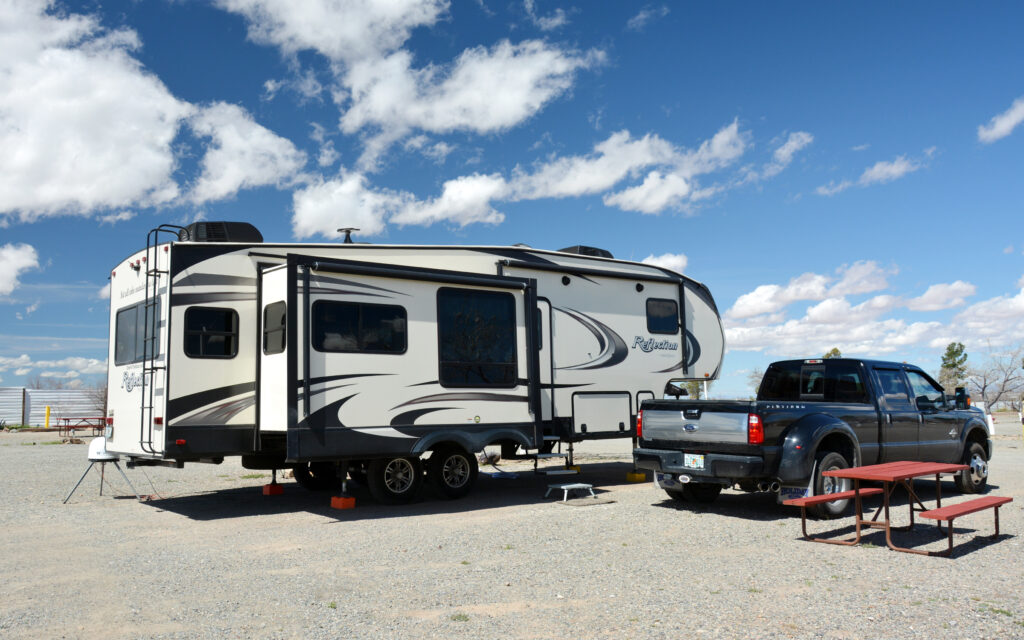
My site at Lourdsburg KOA.
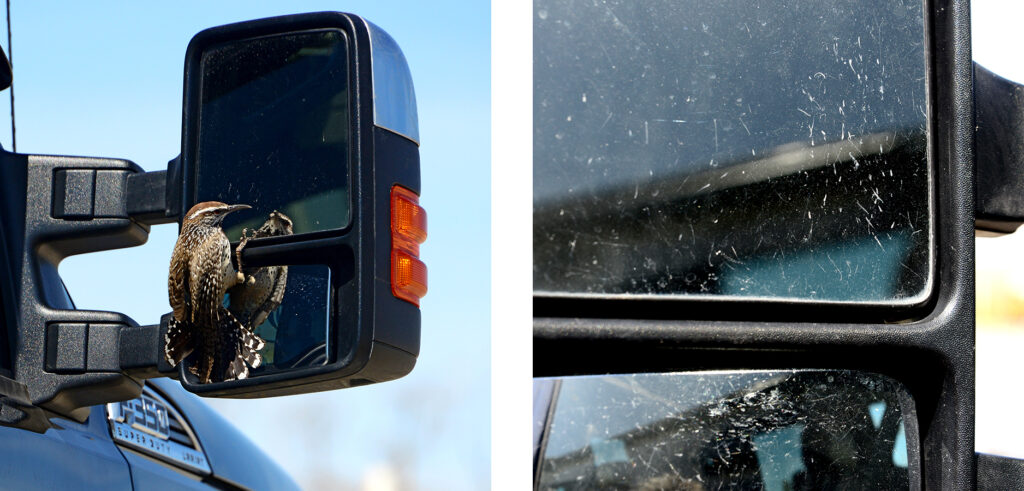
Day after day, this bird insisted on pecking at his reflection on my mirror, leaving beak marks behind.
Shakespeare Ghost Town might be a misnomer because it was occupied until just a couple years ago. It got its start in the early 1800s as a mere watering hole for Indians and wagon trains. In the 1870s, silver was discovered in the hills and the town grew. Eventually, the railroad made its way here but it was three miles away where the town of Lourdsburg sprung up beside the tracks and Shakespeare was nearly forgotten. Silver was mined here on and off until the 1930s and when the last mine closed in 1932, most people moved away.
In 1935, a husband and wife bought the town to use as a ranch. They raised their family here, using what had been the general store as their house. Their daughter lived here with her husband until her death in 2005 and her husband’s in 2018. Over the years, they would give tours of the old buildings and maintained them as best they could with limited funds. The town was designated a National Historic Site in 1970.
Today, the next generation operates tours for $5 and any additional donations are welcome. This money is going towards restoration efforts and they hope to make Shakespeare a true historic and educational facility. The tours are given by a man who lived and worked here for the past few decades and he’s full of wonderful stories and insight into the history and the people. There were only three of us on the tour and he was so talkative that our two-hour tour turned into four but every minute of it was enjoyable.

The tour guide lived here for decades, working for the Hill family who operated the property as a ranch.
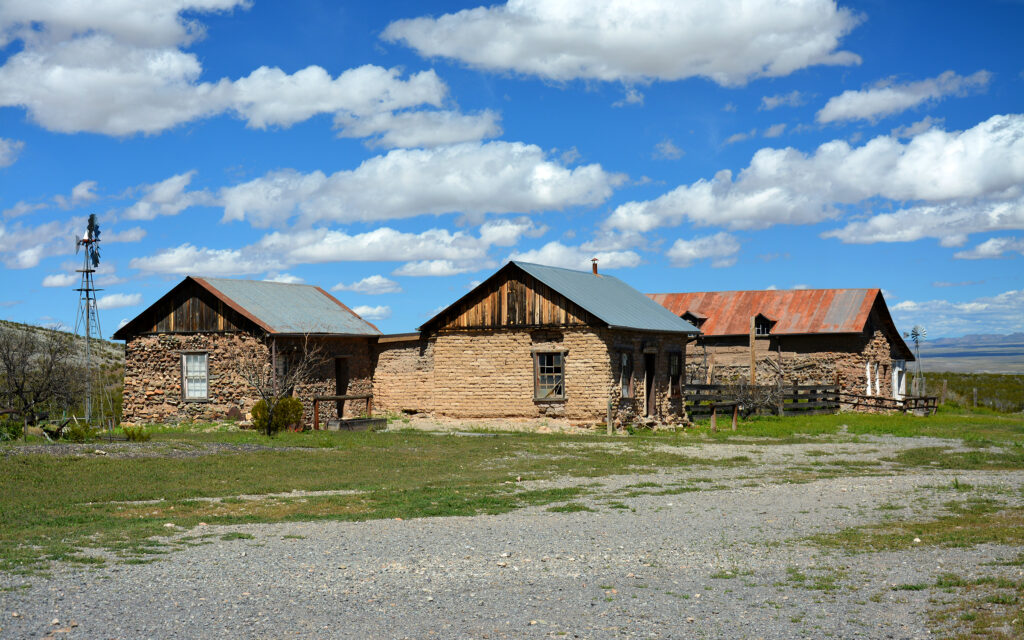
The stage coach stop and neighboring hotel.
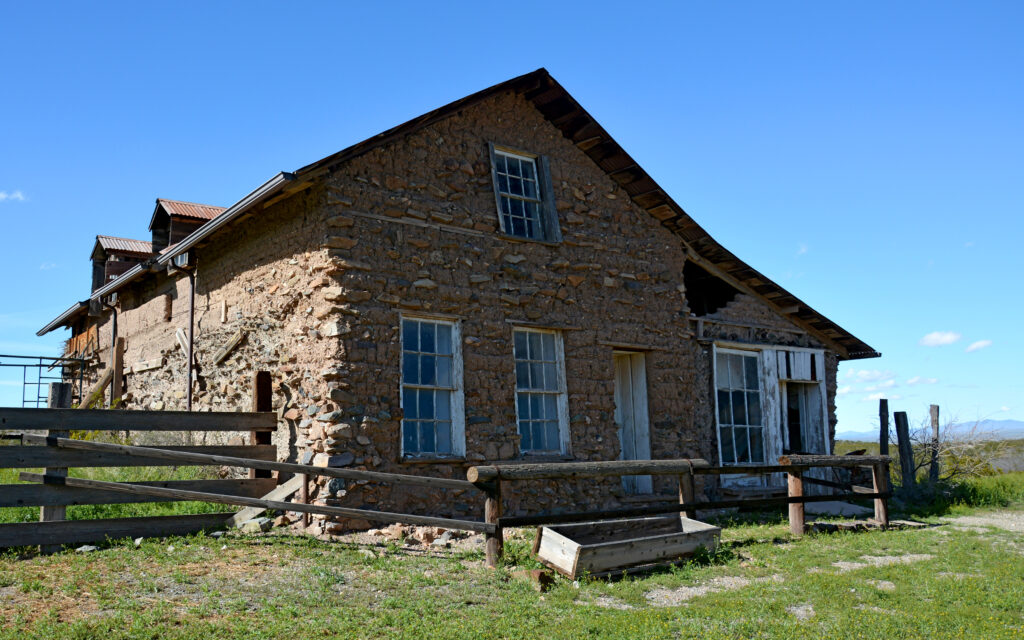
The Stratford Hotel.
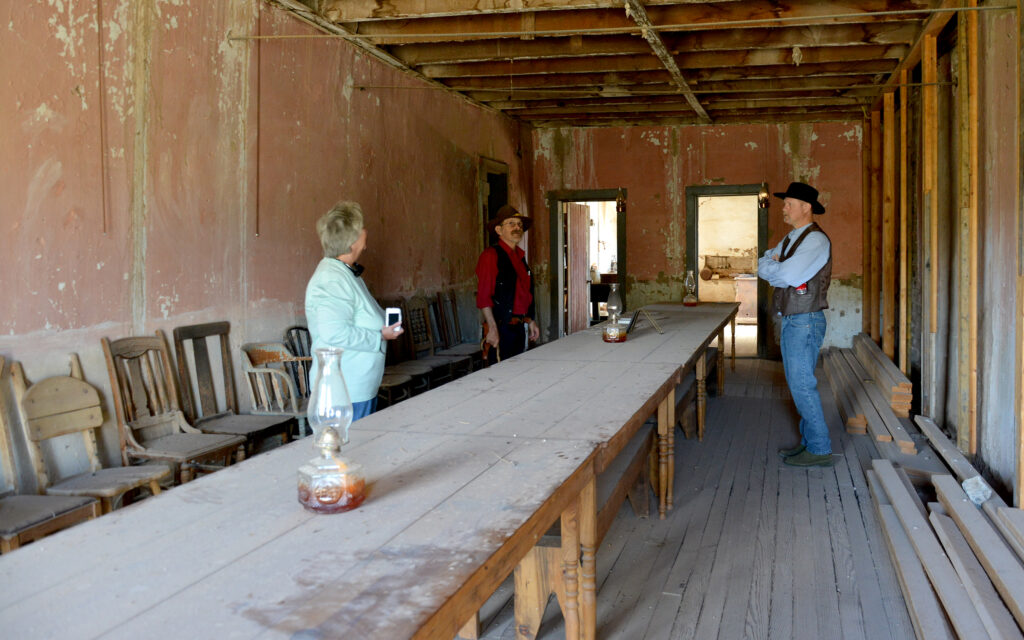
The guest dining room of the hotel.
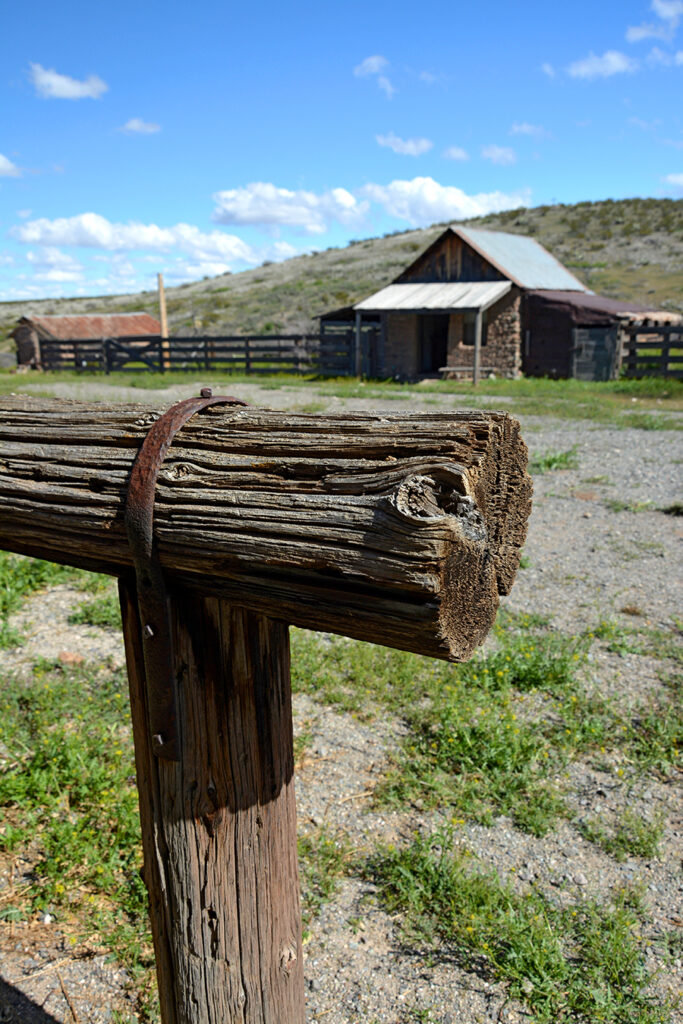
The hitching rail outside the Stratford Hotel.

The living room of one of the small houses.

View from the living room.
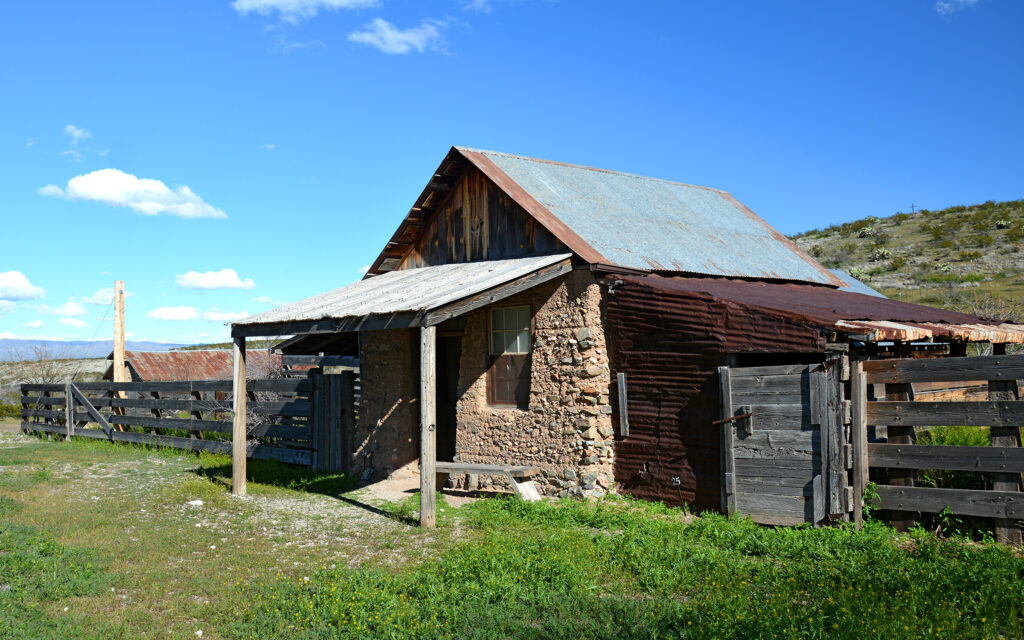
The mining company’s Assay Office where silver would be weighed and valued.

Inside the Assay Office.
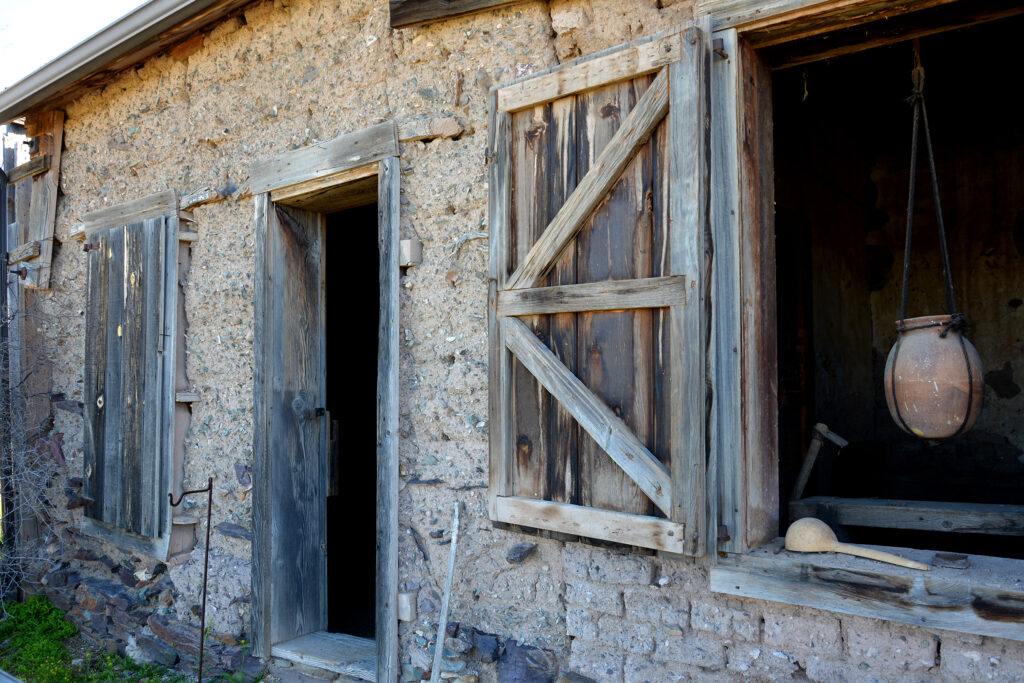
The Mail Station is the oldest structure in the town, dating prior to the Civil War. It was used to house soldiers during the war.
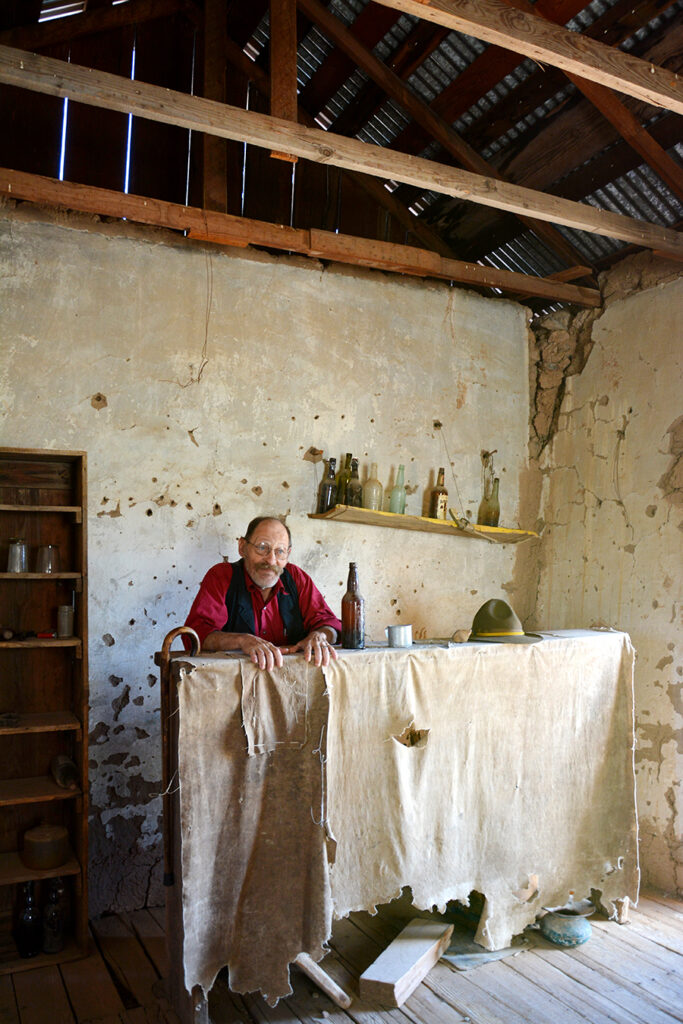
Grant House Saloon was part was the Stage Station that served stage coaches on the Butterfield Line.
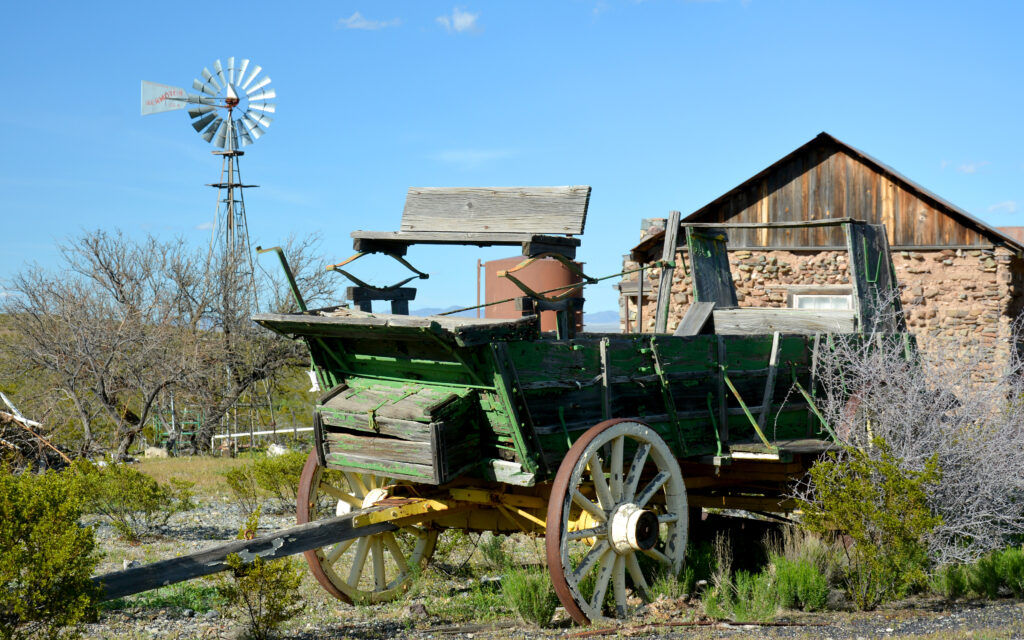
The deteriorating remains of a buckboard wagon.

All that’s left of this wagon is the chassis.
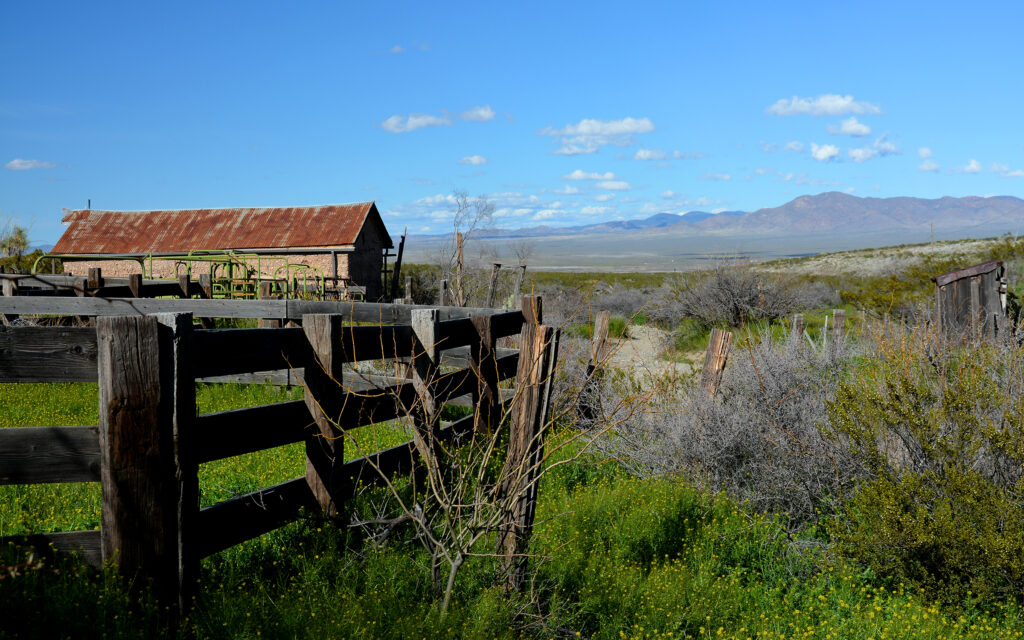
View of the Chiricahua Mountains.
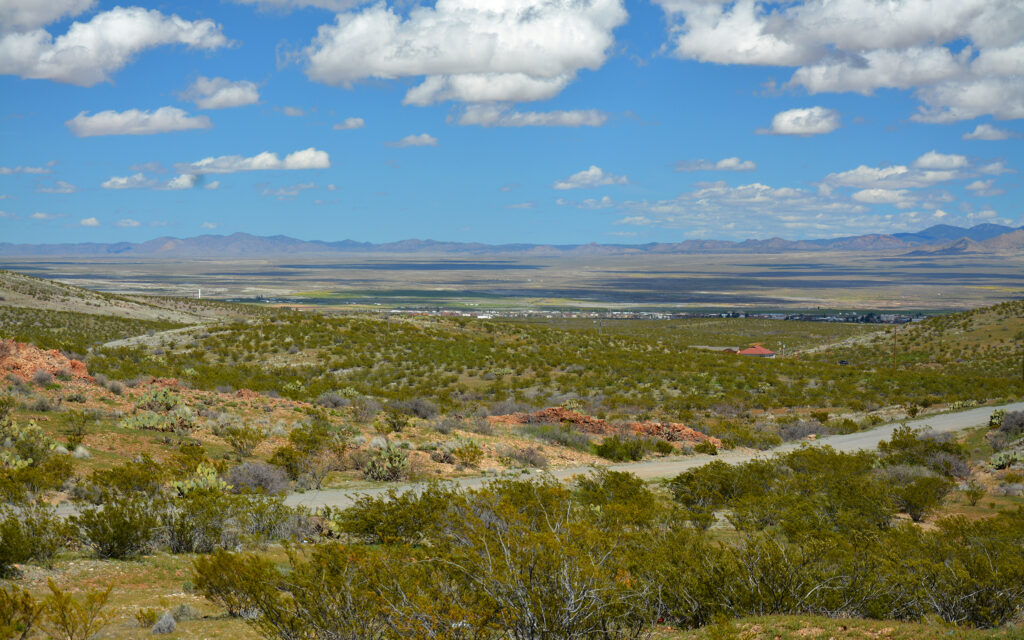
The view looking north to the town of Lourdsburg that was built along the Southern Pacific Railroad.

My father would have gone nuts seeing this pile of old telegraph insulators. The property owner was surprised when I offered to buy a couple of the best ones. He had no idea they had any value.
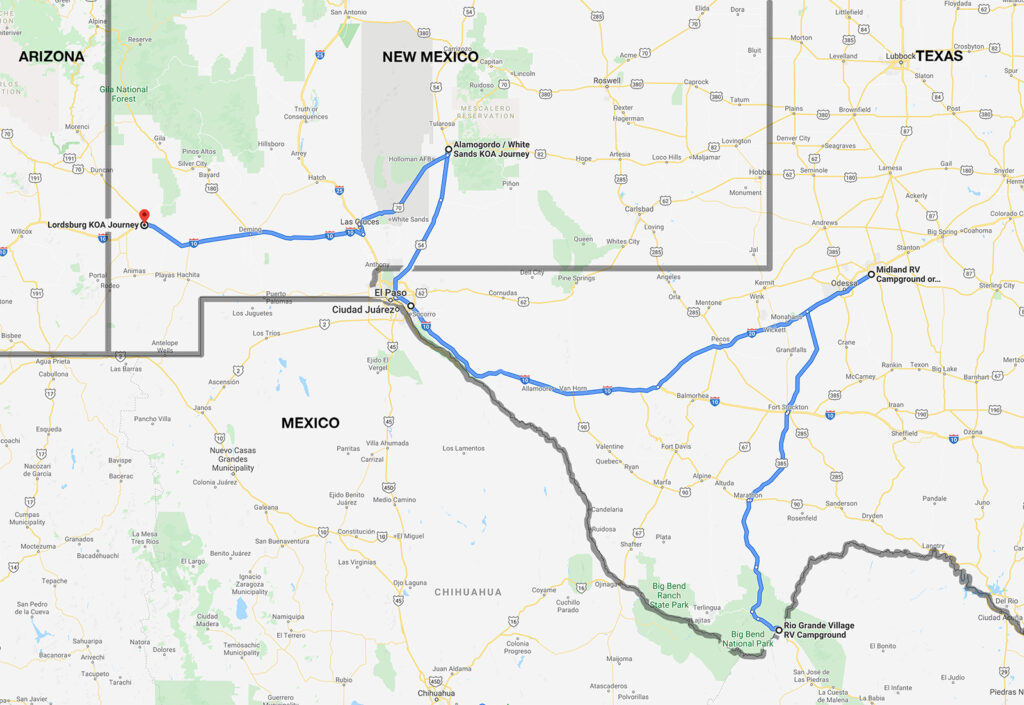
My 825-mile route from Big Bend National Park to Midland, Texas then west to Alamogordo and finally Lordsburg, New Mexico.
Next post: Arizona during Coronavirus shut down.
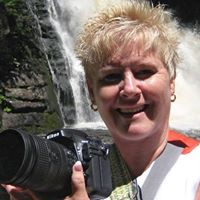
My name is Lindsay Reed and I’m a photographer and retired graphic artist with a passion for both lighthouses and road trips. I am living as a full-time solo RVer in my 33 foot Grand Design Reflection Fifth Wheel trailer and plan to spend the next few years traveling the U.S. and Canada photographing not only lighthouses, but everything else there is to see in this wonderful land. I hope you enjoy my blog and will follow my adventures in the months and years ahead.